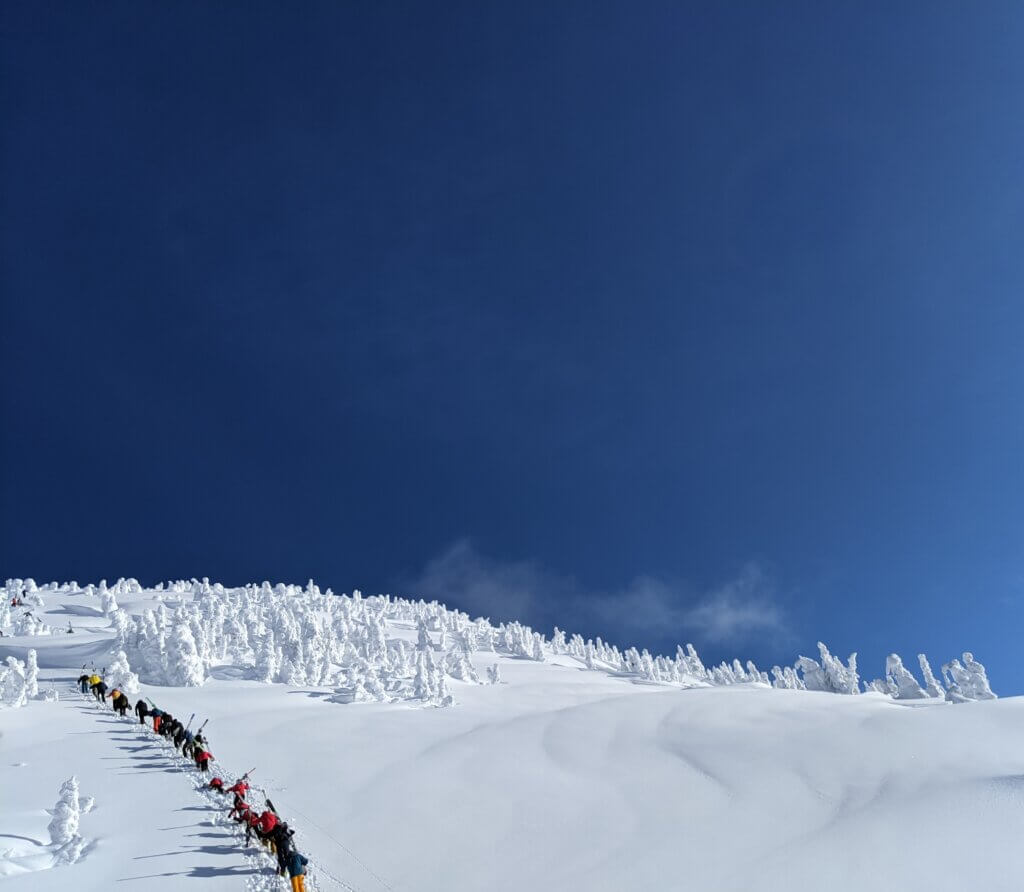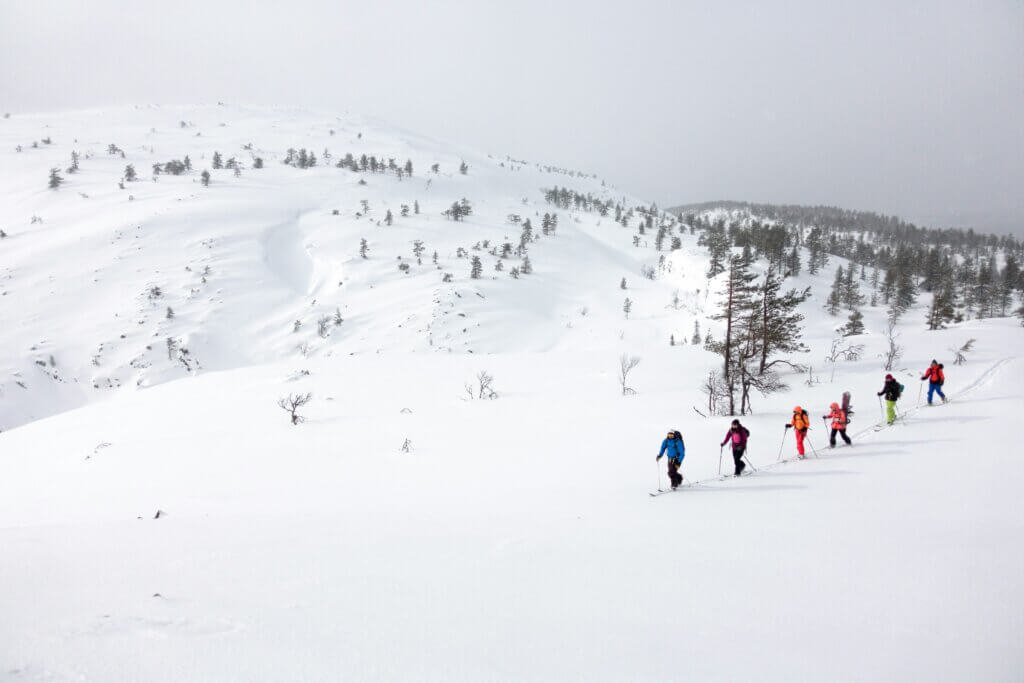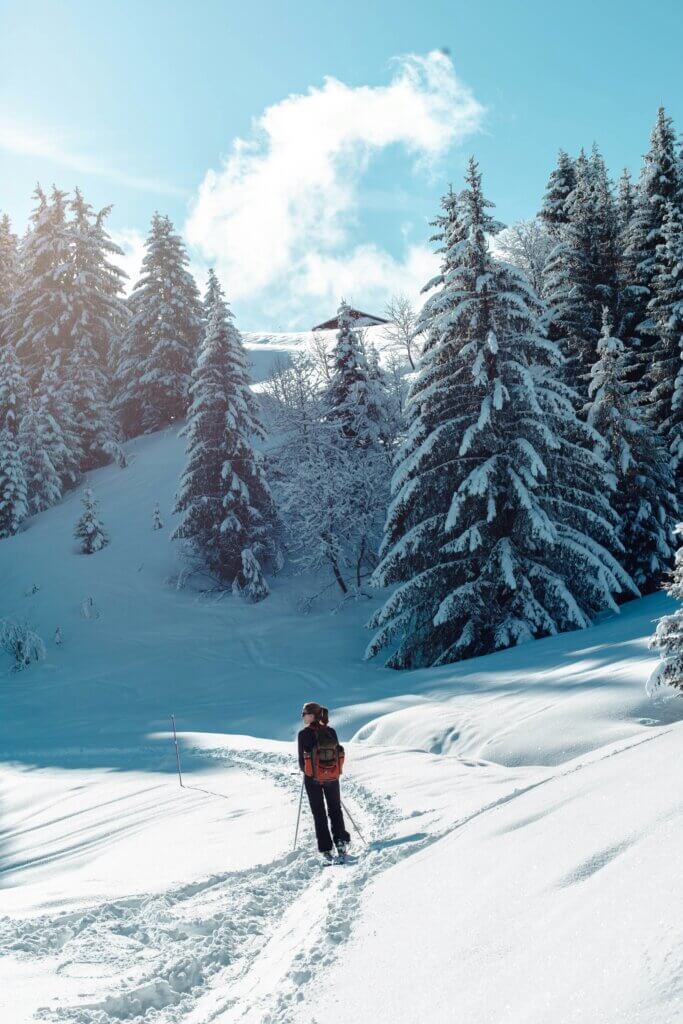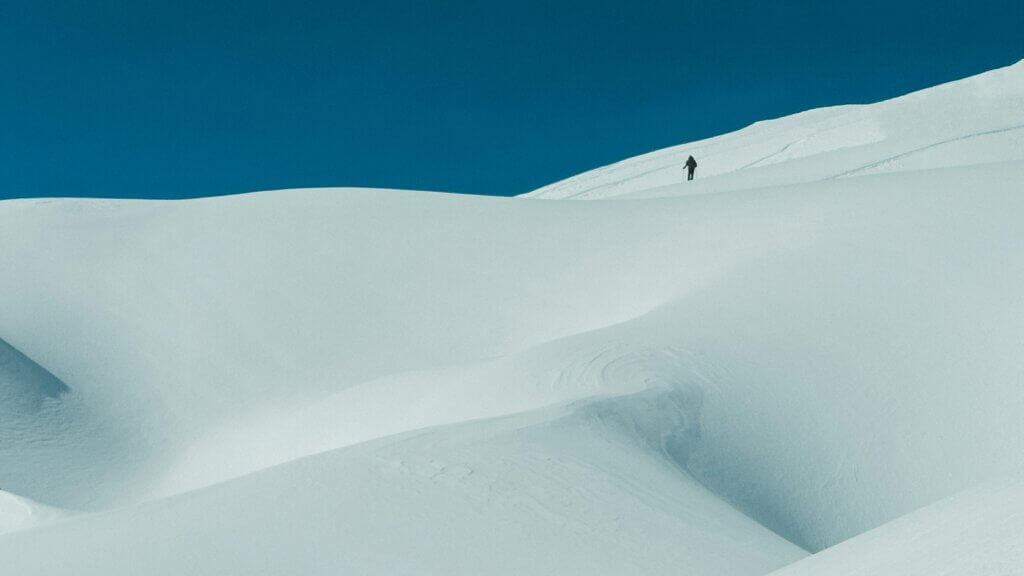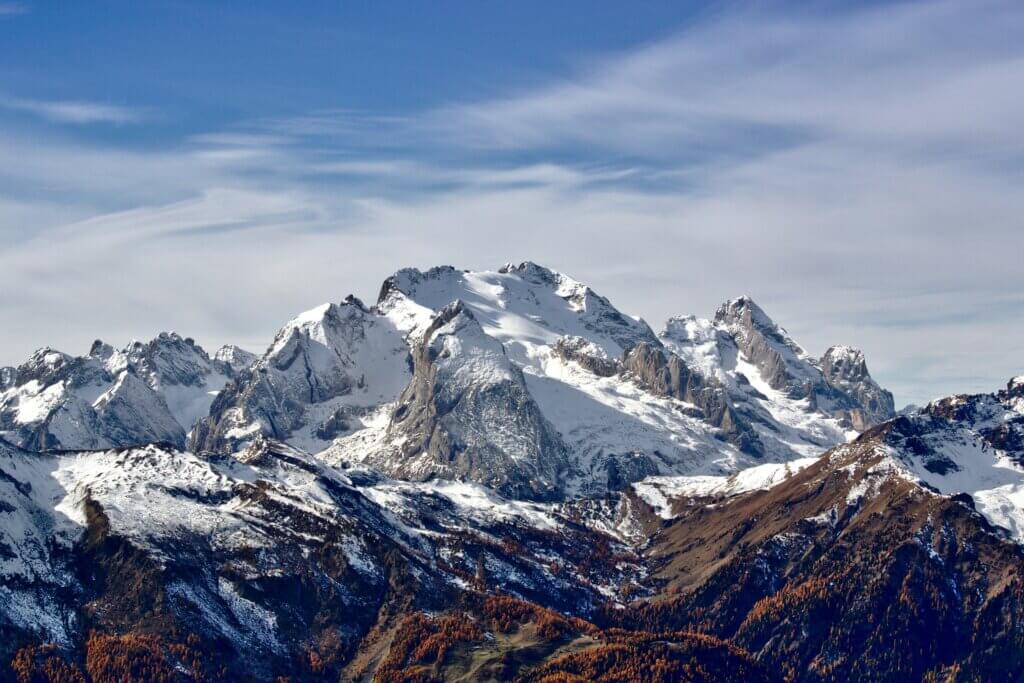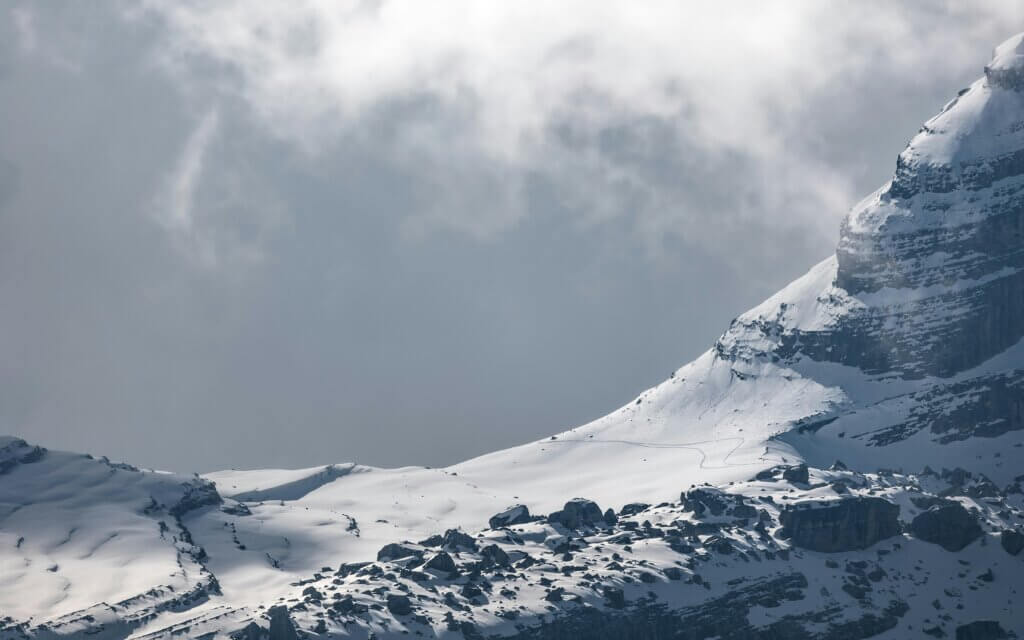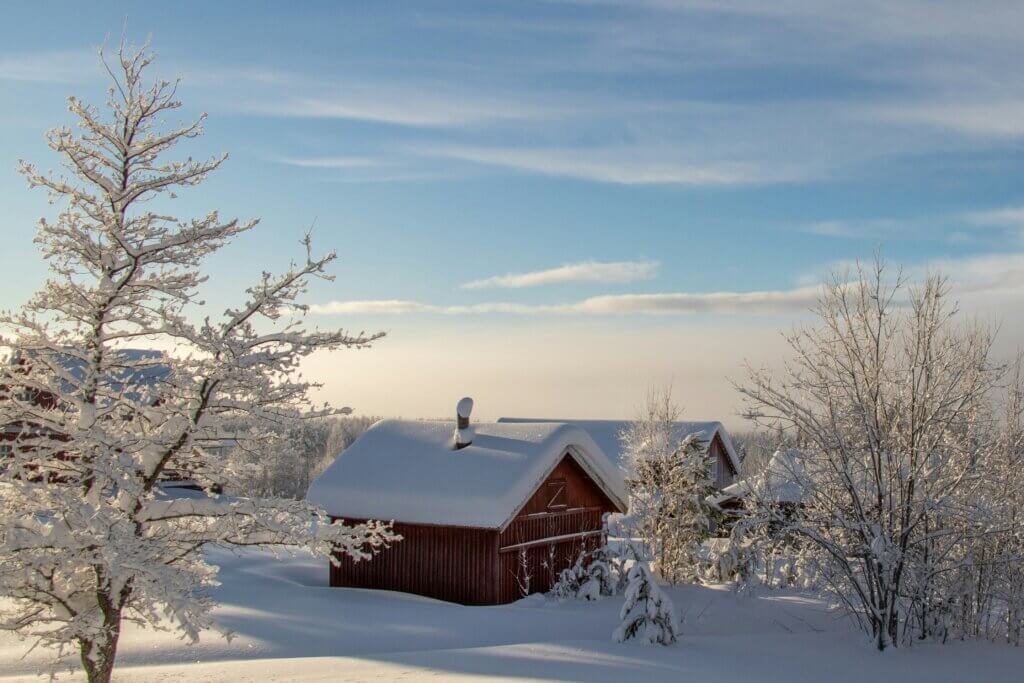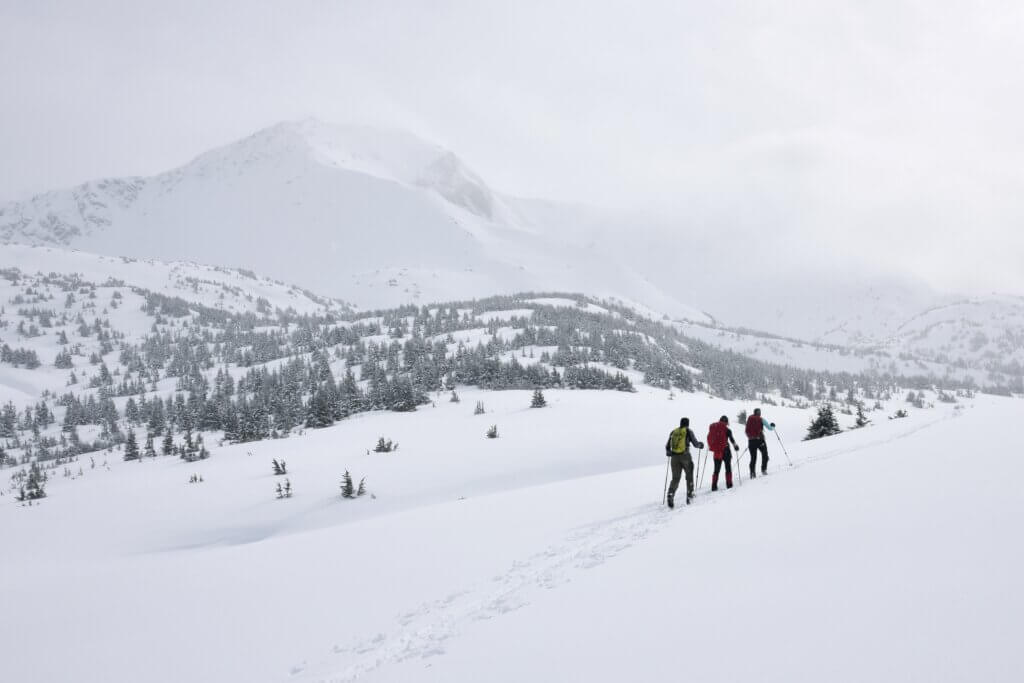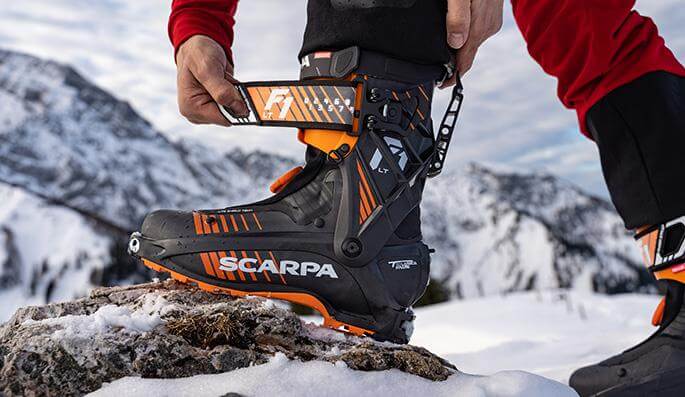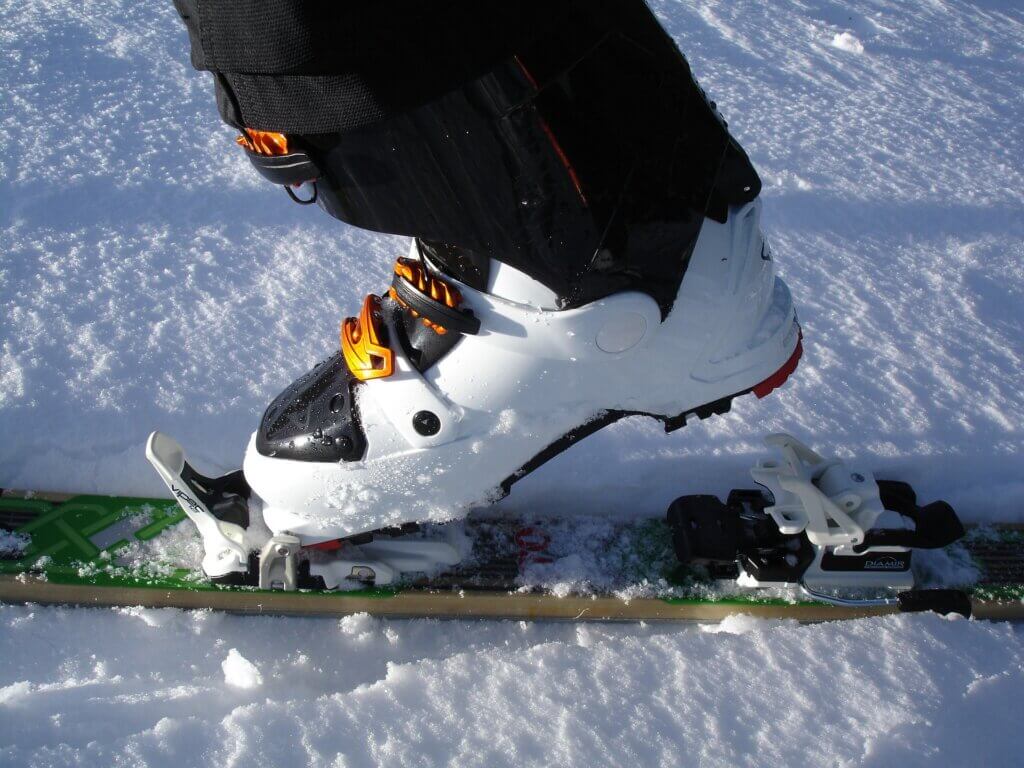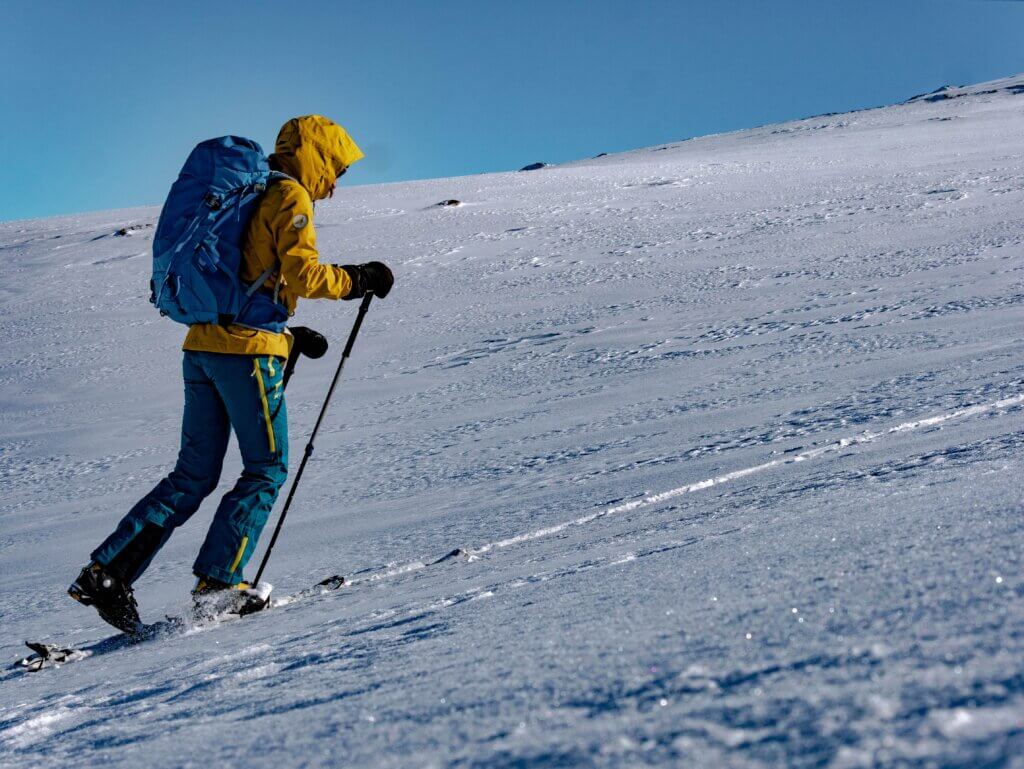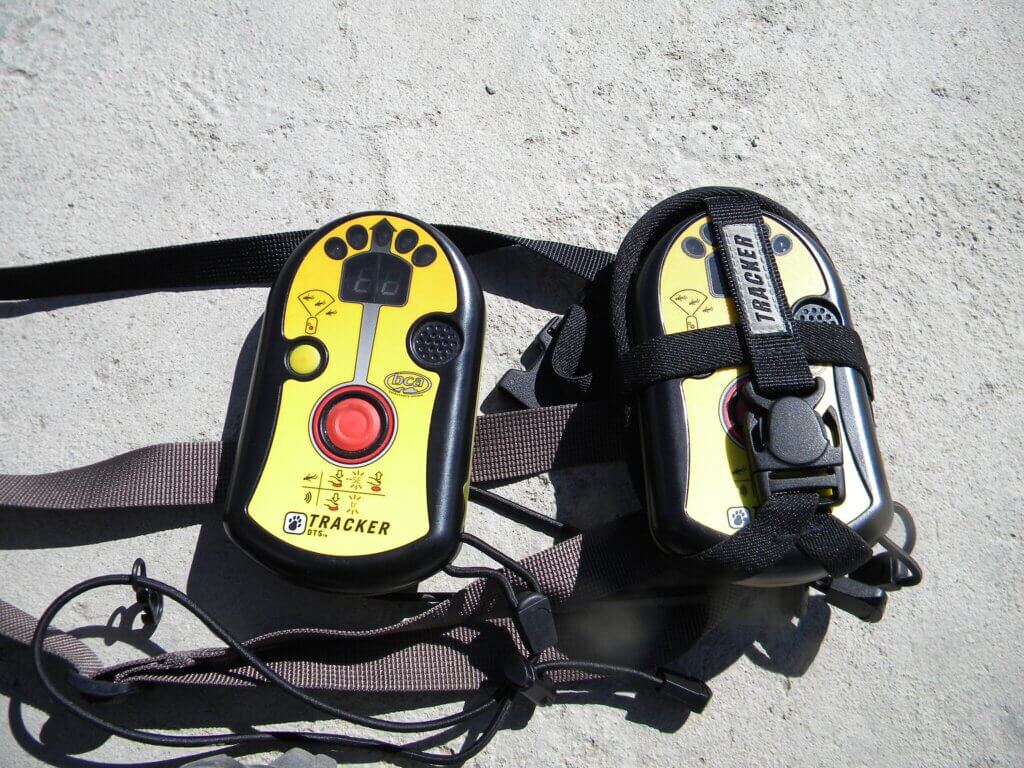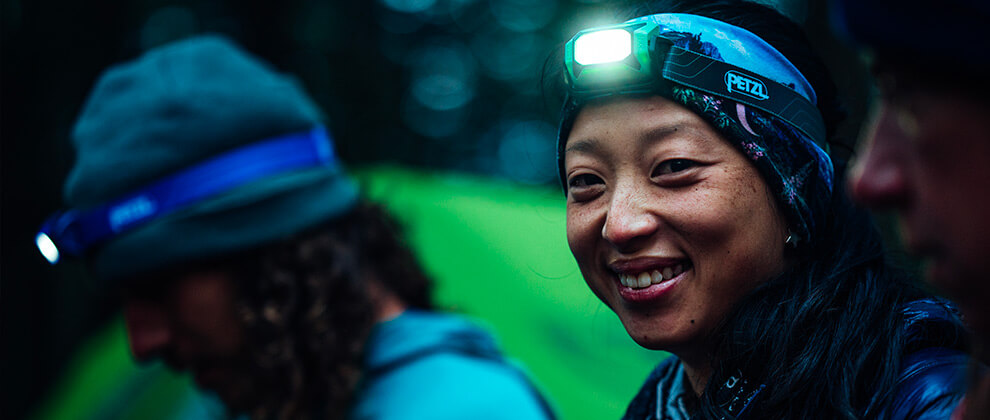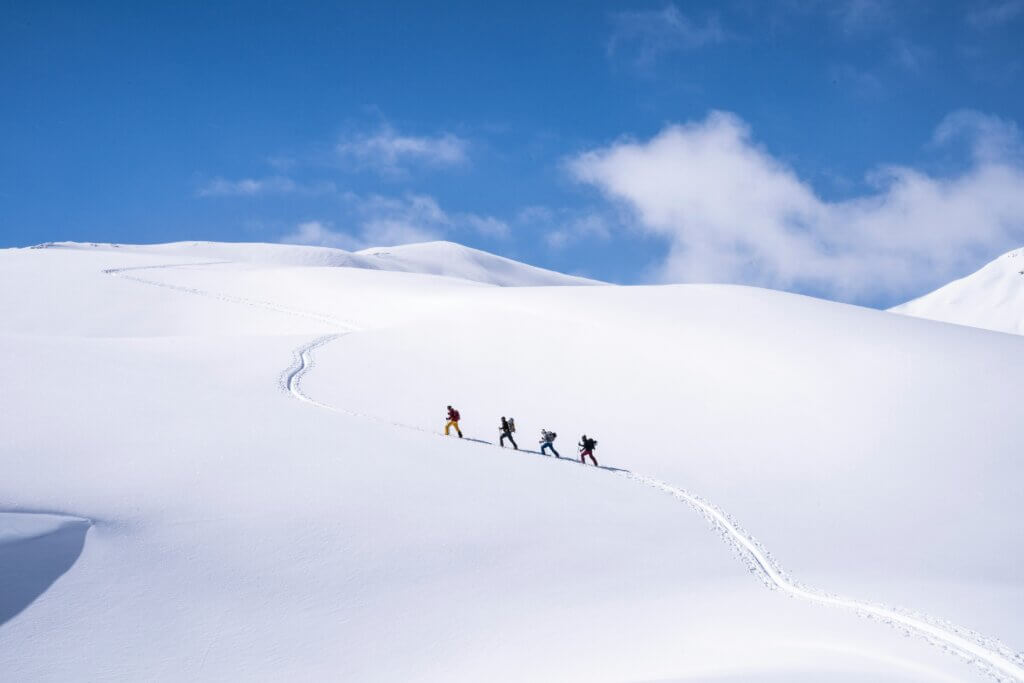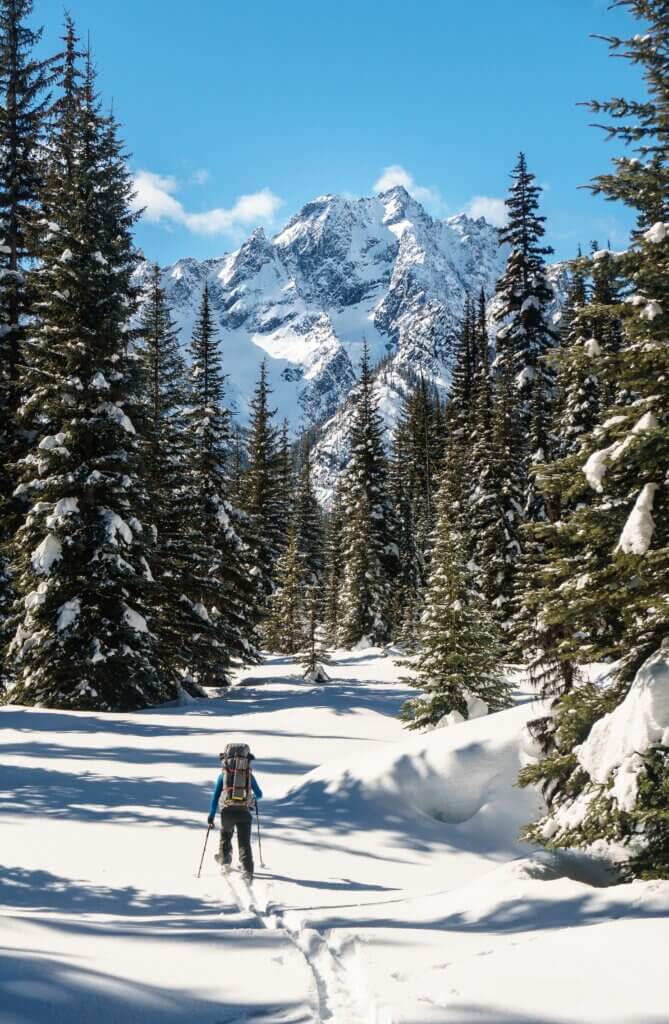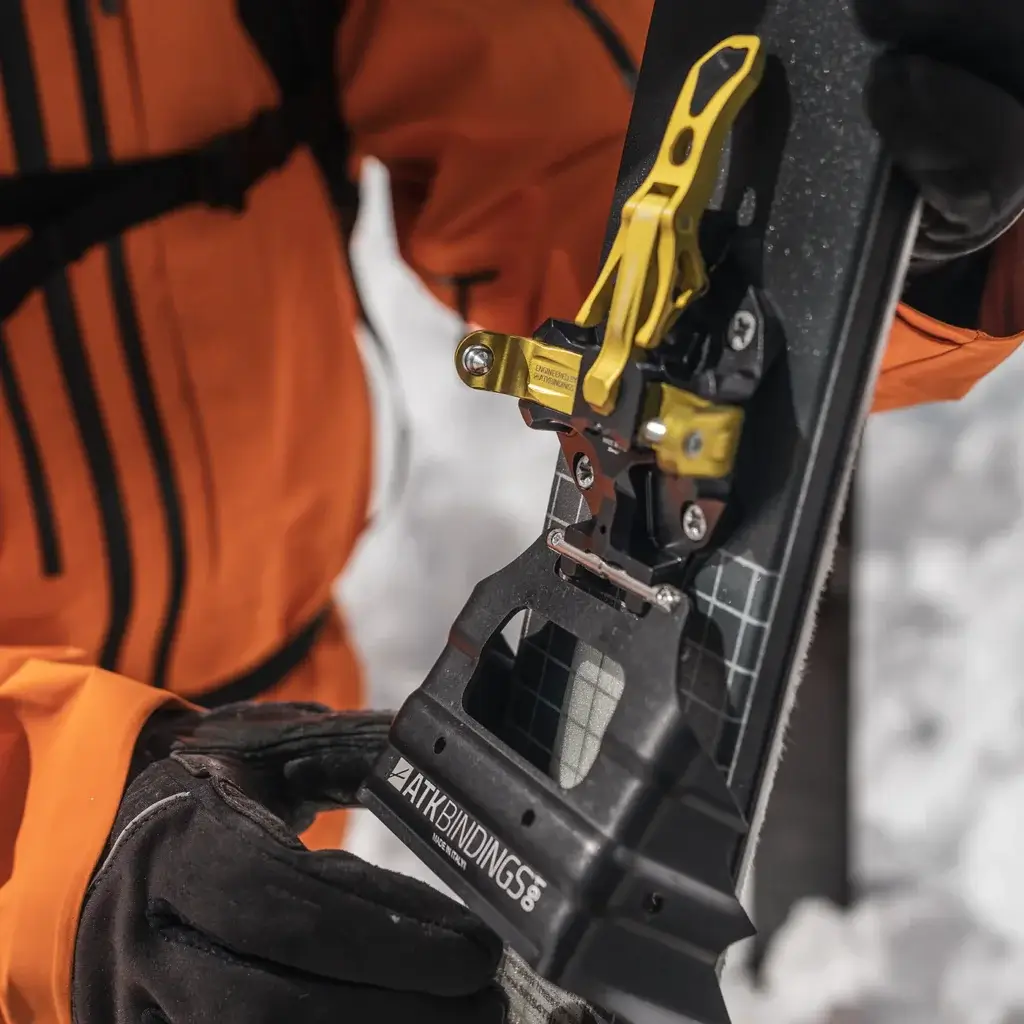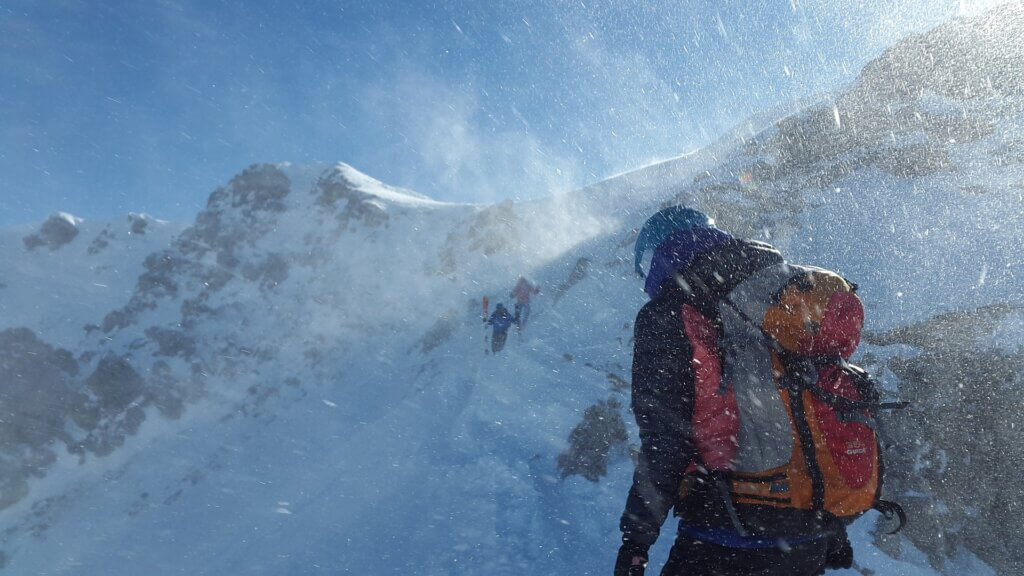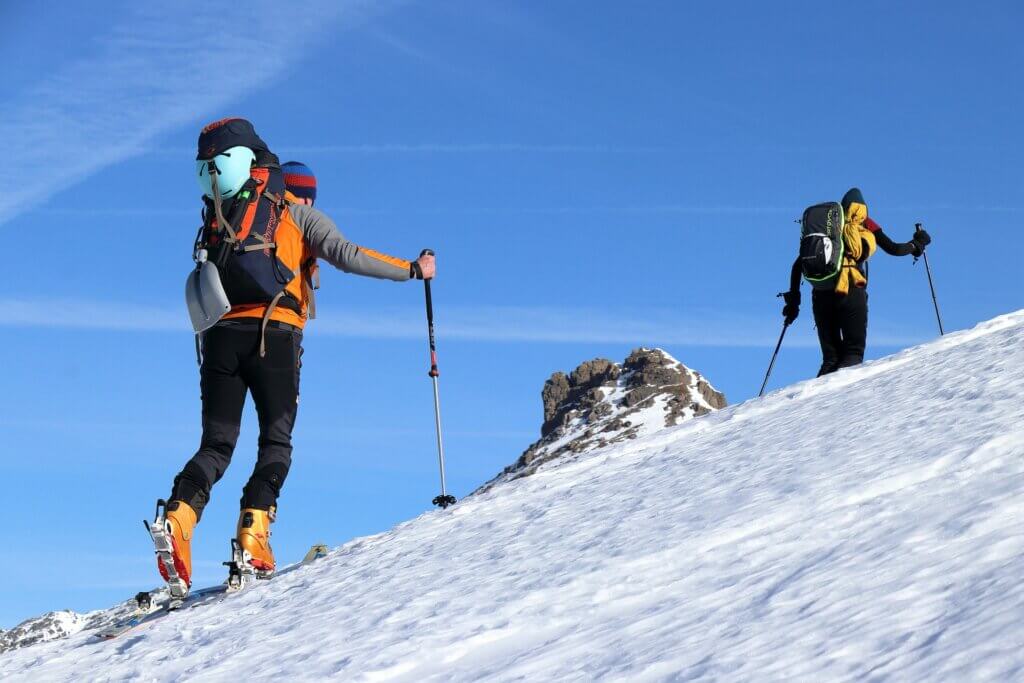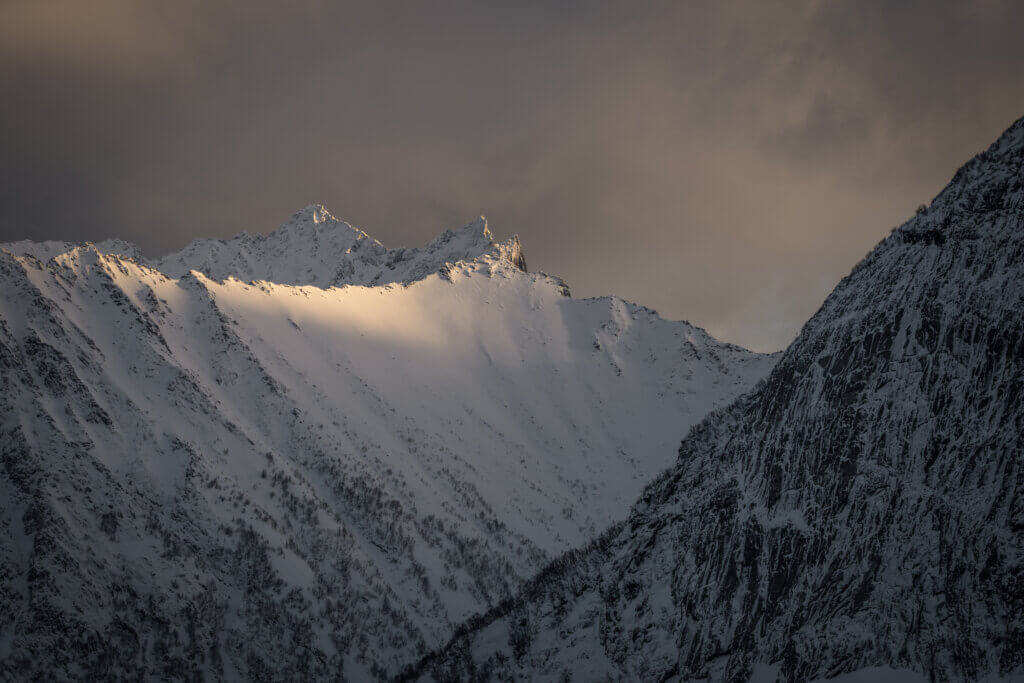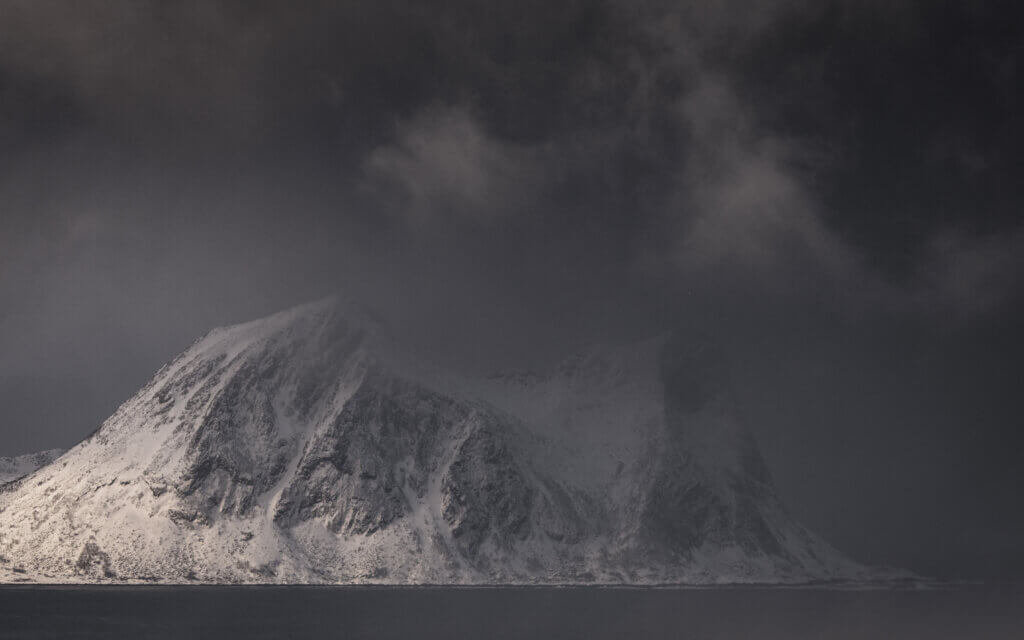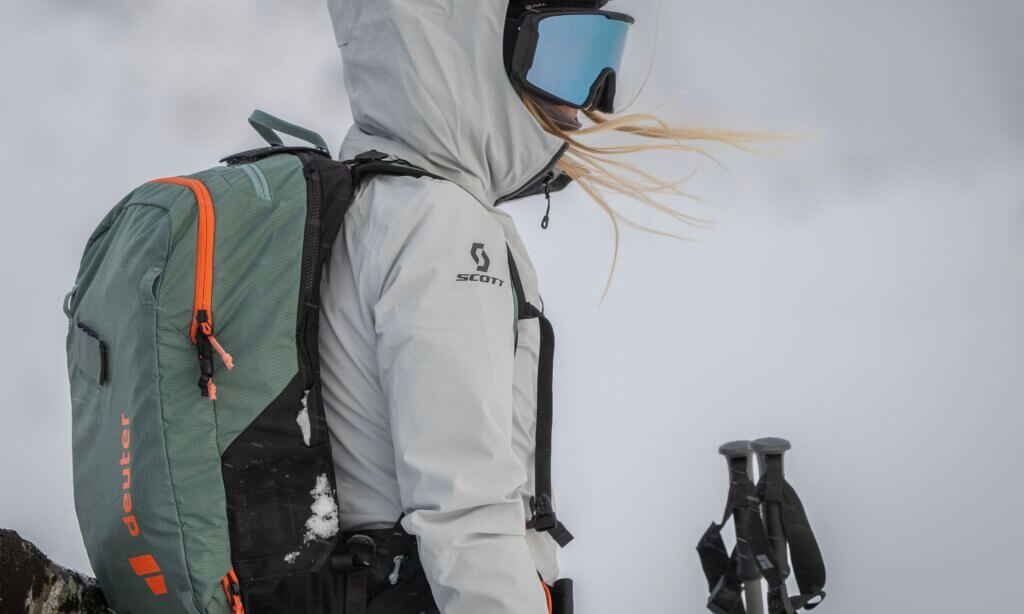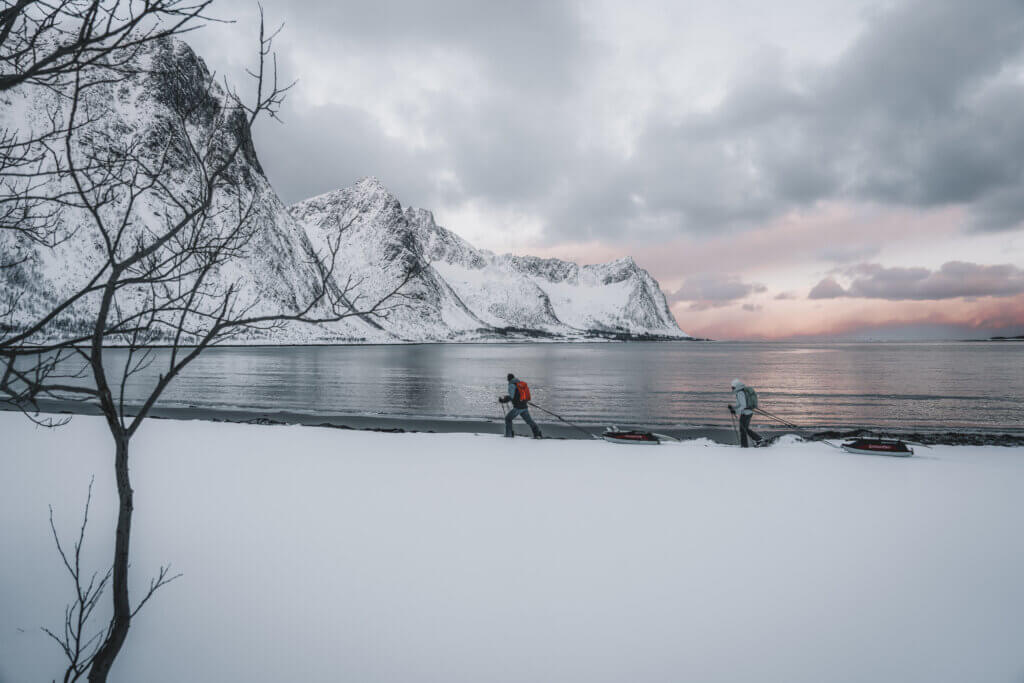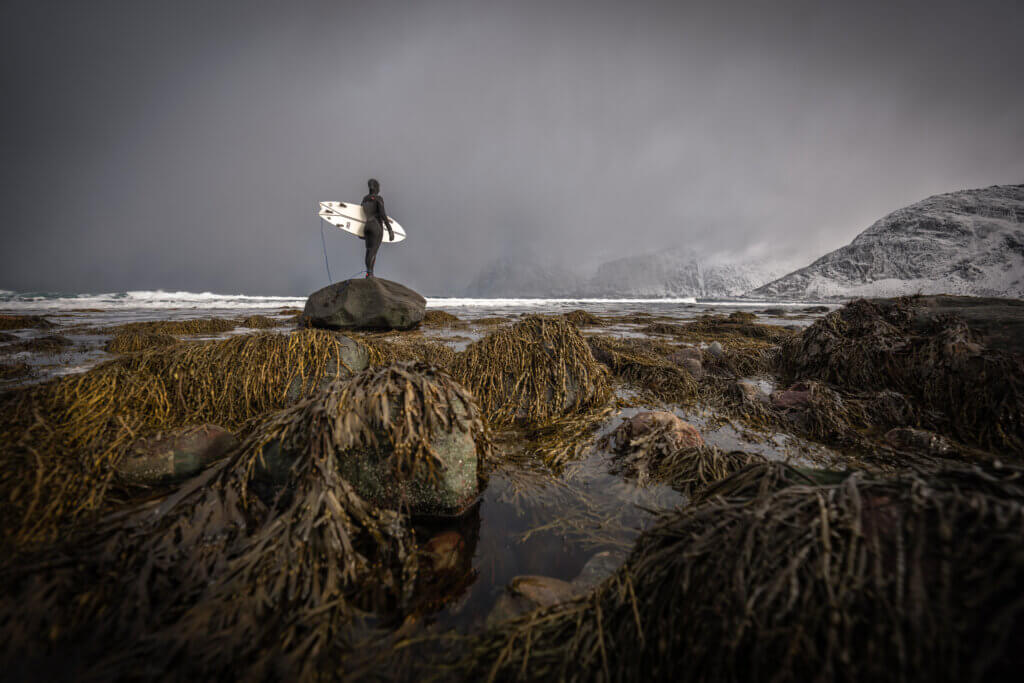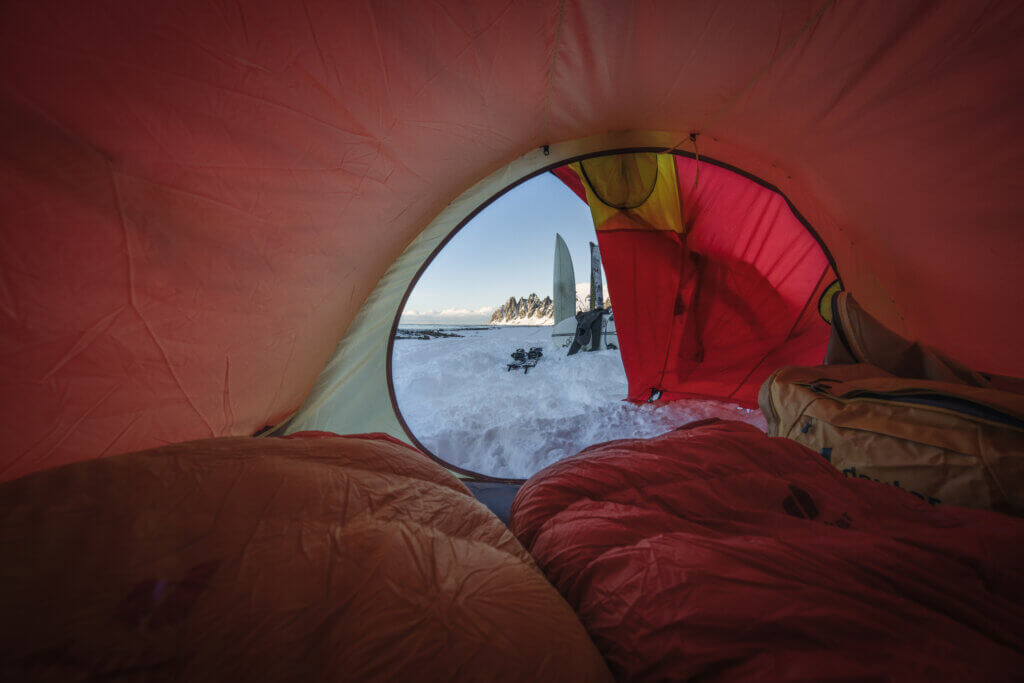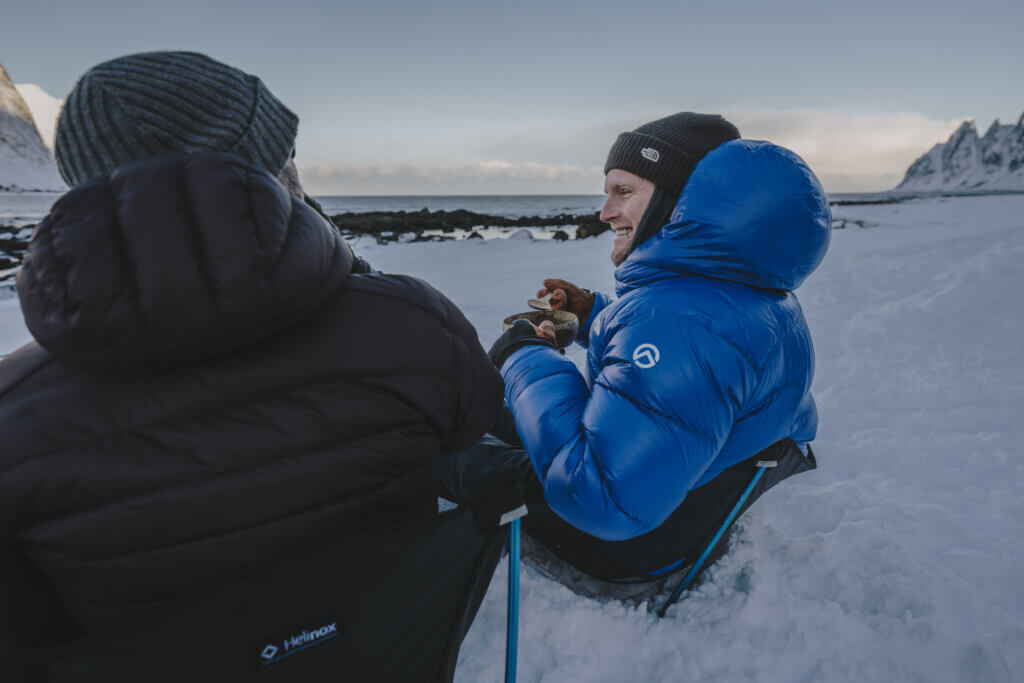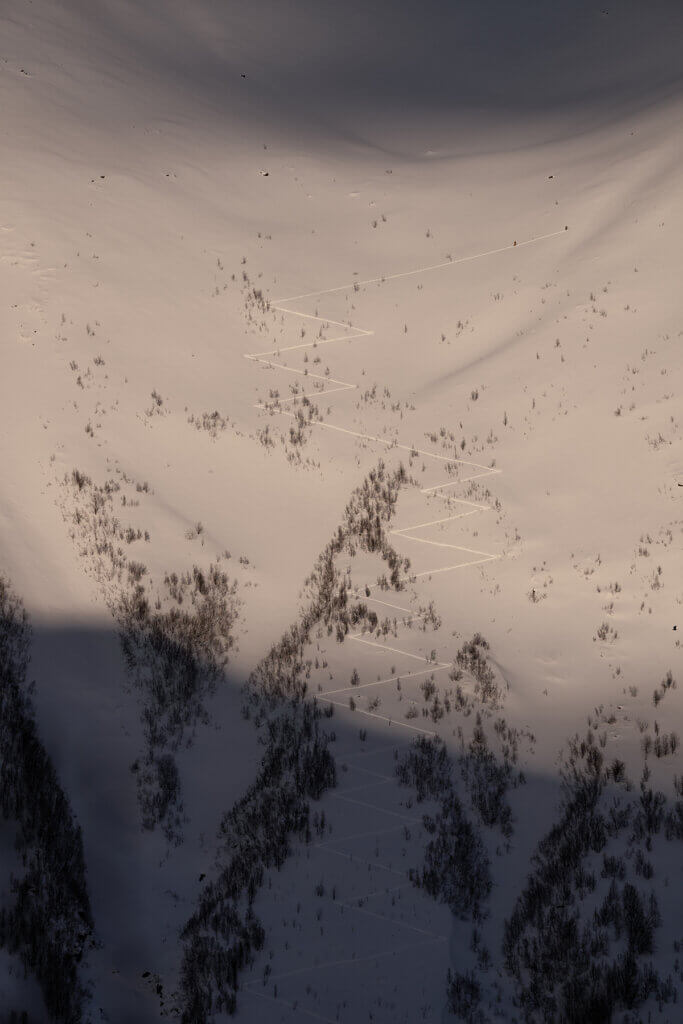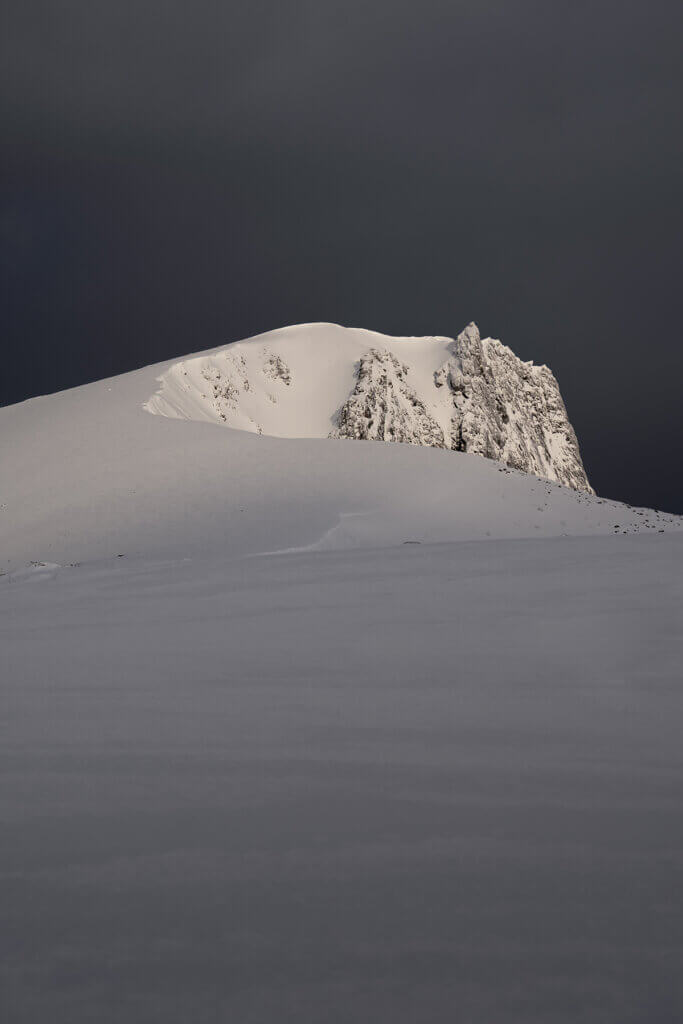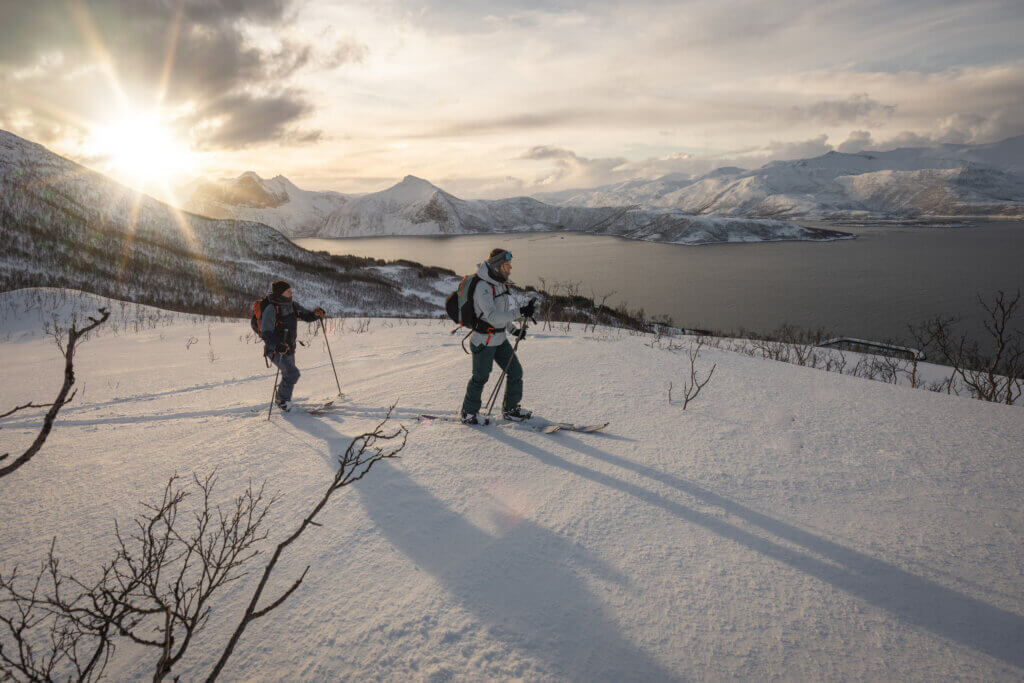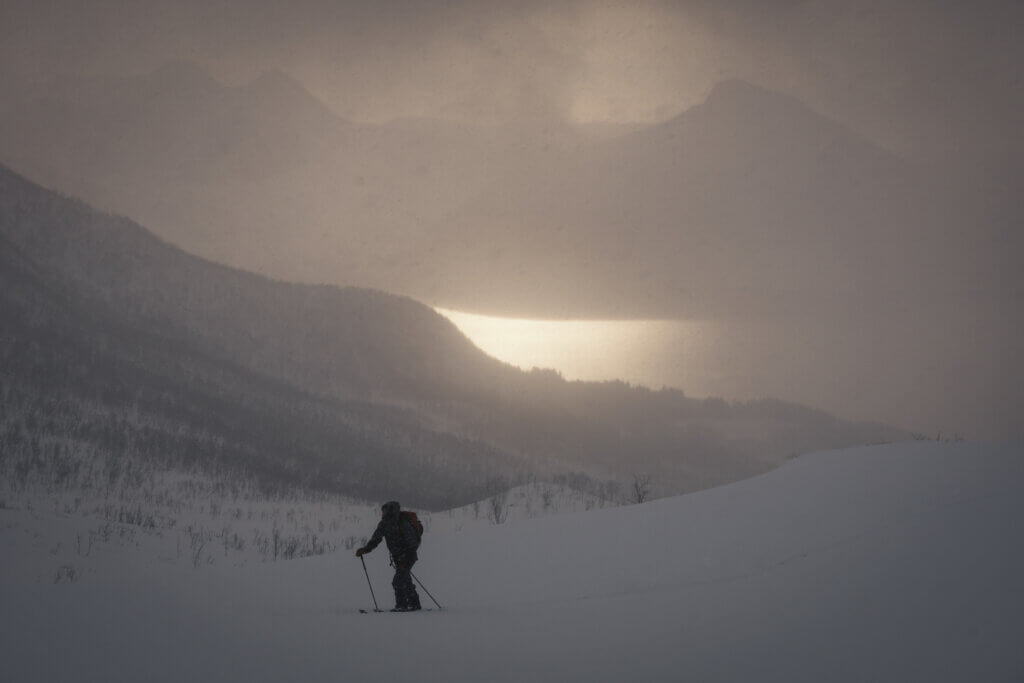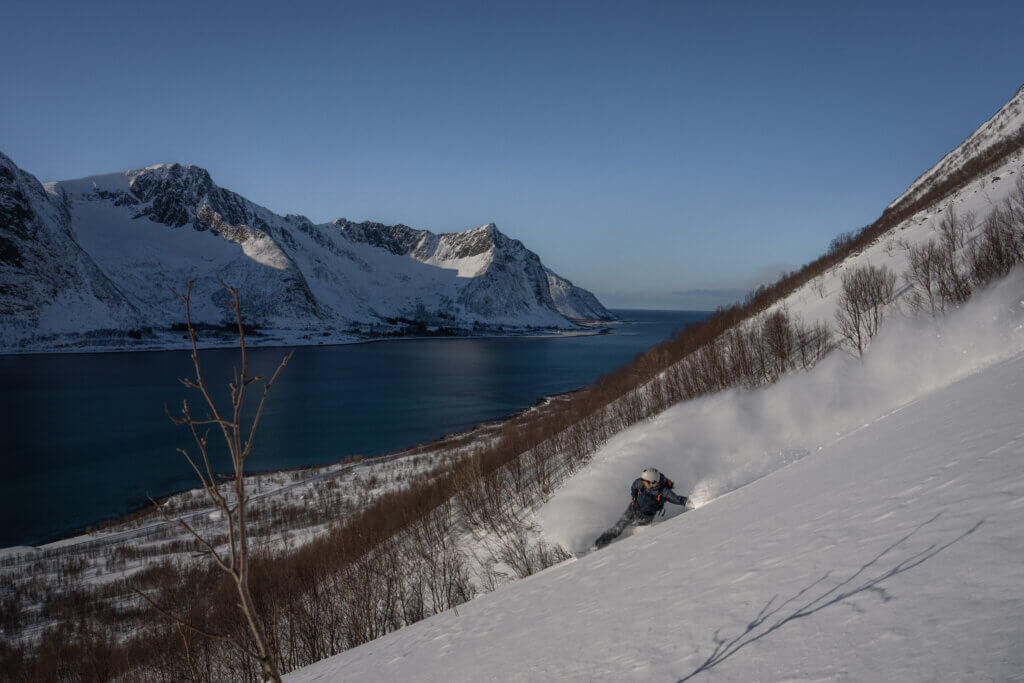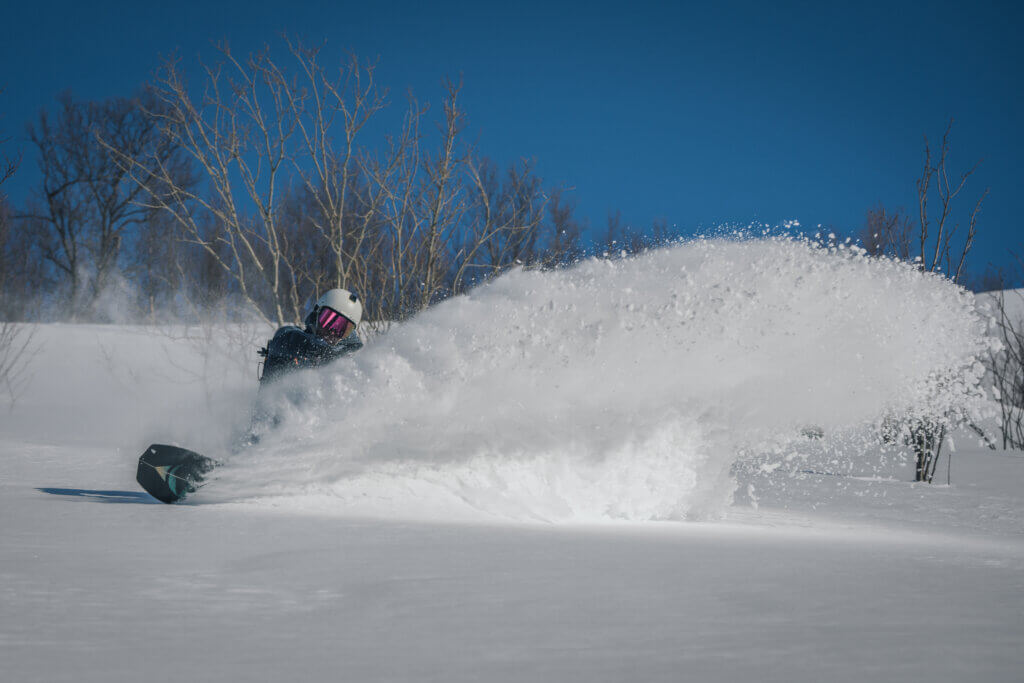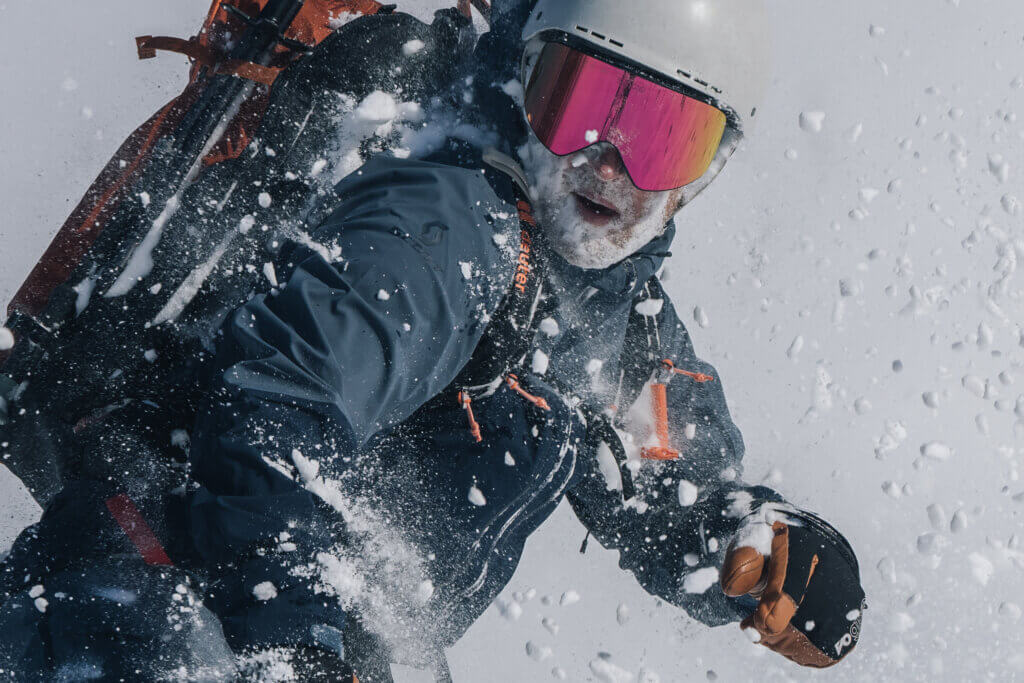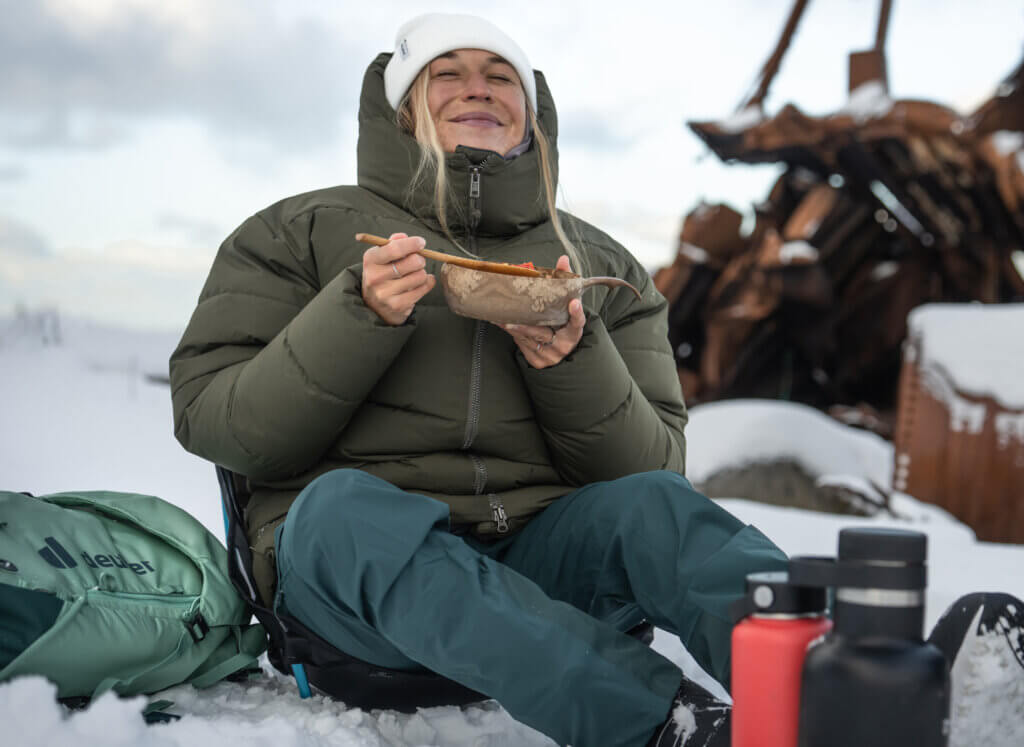Alaska, home to an extravagant spectacle of over 100,000 glaciers (if you are still hesitant about the true definition of a glacier, read this), offers an unrivalled scenic view and attracts nature enthusiasts for various activities, such as trekking, hiking, and photography. These marvels of nature, with around 600 of them named, serve as a major allure for locals and visitors seeking to immerse themselves in the mesmerizing beauty and charm these ice formations exude.
Interestingly, around a quarter of these glaciers, equivalent to 4.6 million acres of land, are nested within national parks. The genesis of these imposing ice masses necessitates three constituent factors – ample snowfall, mild summers, and the natural gravitational flow of ice. Simply put, these alluring features are brought to life in areas where the annual snow deposition surpasses the rate of snowmelt.
Alaska’s Harding Icefield in Kenai Fjords National Park is a prime example of an average snowfall of 60 feet per annum being recorded. Over time, these accumulated snow episodes, cooler summers, and gravity gradually transpire into interlinked formations of glaciers or icefields.
Remarkably, as formidable witnesses to the Earth’s history, glaciers also significantly reshape the planet’s geographical aesthetics. As they shift, their forceful movement gives birth to valleys and mountains. They also act as natural record keepers, with glacial ice preserving weather patterns and life forms from past epochs.
Additionally, there are ‘tidewater glaciers’, a term which refers to those that end at the sea. The ice that breaks away or ‘calves’ from these fascinating formations provide crucial habitats to species such as seals that rely on ice for survival. In essence, being more than just an awe-inspiring spectacle, Alaskan glaciers are key contributors to the ecological balance, safeguarding the fragile lives that depend on them.
Mendenhall Glacier: Alaska’s Most Accessible Ice Giant
Located in Southeast Alaska, you’ll find the Mendenhall Glacier, the only glacier in the region accessible via road. A 12-mile trip away from Juneau, it also stands out due to its extraordinary accessibility, as visitors can easily reach this remarkable natural phenomenon either by taxi or bus.
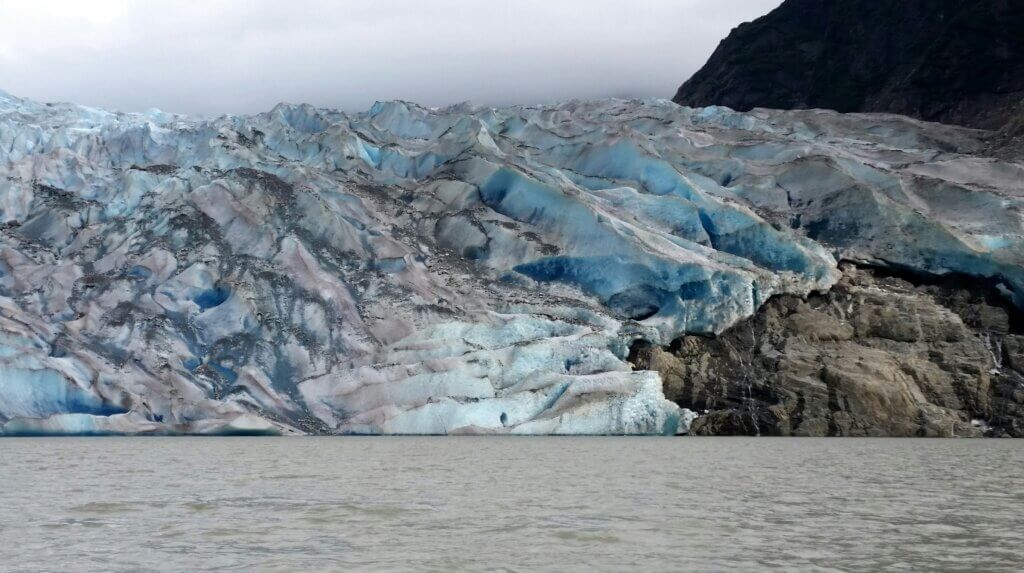
Hosting more than 400,000 tourists annually, the glacier is a must-visit destination due to its striking features and unparalleled experiences. Forming a part of the enormous Mendenhall Glacier Recreation Area nestled in Tongass National Forest, it spans approximately 13.5 miles and is half a mile wide. The icy behemoth channels into Mendenhall Lake, which remains relatively calm, with the towering glacier face fluctuating between 5 to 200 feet in height and creating an imposing backdrop.
Visitors can delve deeper into the glacial surroundings via the onsite Forest Service Visitor Center. This facility overlooks the tranquil lake and houses a comprehensive display showcasing an aerial map of the ice field and informative scopes for a minimal fee.
Furthermore, the forest service has laid out a network of hiking trails that tourists can leverage to explore the mesmerizing glacier and its surroundings further. The Trail of Time stands out with signs along the half-mile path detailing the glacial recession, while the East Glacier Trail, a 3.5-mile loop, offers an elevated perspective over the icy landscape. Although no current paths lead to the glacier due to geographical obstacles such as cliffs and the lake, all offer exceptional photo opportunities. Visitors can also embark on a guided hike.
For those with the urge to venture beyond, the 2-mile hike to Nugget Falls offers a worthy detour during their visit to the Mendenhall Glacier. In conclusion, this iconic Alaskan attraction provides a breathtaking encounter with nature’s magnificence, whether viewed afar or experienced up close.
Experiencing Tidewater Glaciers at Prince William Sound, Alaska
Prince William Sound, a mere 90-minute journey from Anchorage by either car or train, offers one of the most easily accessible places to embark on a glacier cruise. It is renowned for having an abundance of tidewater glaciers—more than anywhere else in the world. These glaciers have origins high up in the mountains and journey dozens of miles before dramatically descending into the sea.
A typical day cruise lasts between four to five hours. However, there are two distinct types of cruises, each offering a unique experience. High-speed catamarans offer a chance to witness many glaciers, including the famed Surprise Glacier in Harriman Fjord. This particular glacier is much lauded for its frequent and dramatic calving – where large chunks of ice separate and crash into the water.

Conversely, slower-paced cruising boats afford more time at each visited glacier. Moreover, this cruise type often includes a Blackstone Bay stopover, recognized for its auditory delights. Here, visitors can marvel at the majestic ice formations and enjoy the distinct sound of creaking and cracking ice as they indulge in prime rib and king crab.
For those seeking a more personalized and immersive experience, a multi-day small ship cruise or private yacht charter is also available. This allows aficionados to immerse themselves in this natural phenomenon’s awe-inspiring spectacle.
The Majestic Knik Glacier: A Must-See Attraction in Alaska
The stunning Knik Glacier cuts an impressive figure, snaking its 25-mile length down from the Chugach Mountains before dramatically cascading into an iceberg-filled lake that nourishes the Knik River. Its five-mile-wide face, daily calving, and towering 400-foot-tall ice walls that emerge from the lake make for breathtaking scenery. The icebergs are in constant motion, floating, rotating, and fragmenting.
This natural spectacle is conveniently situated near Anchorage and the Mat-Su Valley, making it an ideal destination for explorative tours. Various options for experiencing the glacier are available. Flightseeing trips span from a short 90-minute round-trip to an extended 2.5-hour trip that includes landing on the glacier. For those in the Palmer vicinity, helicopter tours offer quicker routes to the Knik Glacier.

Upon reaching the glacier, visitors have the option of lacing on shoe spikes to navigate the icy terrain safely. An array of activities await the adventurous, from ice climbing and paddle boarding in the vibrant blue melt pools to dog sledging atop the glacier’s snowfield. For thrill-seekers, an exhilarating all-day ATV adventure can take you to the glimmering lake at the glacier’s face.
On the other hand, the West Butte Trail offers wonderful vantage views for those who prefer to appreciate the dramatic expanse of the Knik Glacier from a safe distance. The glacier, nestled snugly into the valley, is a splendid sight.
Significantly, this glacier, located east of Anchorage in the Chugach Mountains, is renowned for its natural beauty and defining presence, notably in Hollywood movies such as ‘Avalanche’ and ‘Star Trek’. Equally significant is the immense lake created by the melting glacier, covering a massive six square miles.
Among the many available tour options, one standout is the Alaska Helicopter Tours, which offers an unforgettable experience of landing on the glacier, complete with shoe spikes to facilitate exploration of the icy expanse. Hence, the Knik Glacier is a spectacular destination that captivates with its natural beauty and array of adventure opportunities.
Matanuska Glacier from Anchorage: A Guide to Hiking and Driving Trips
The Matanuska Glacier, an impressive sight to behold, represents the largest roadside glacier that visitors can easily access and touch. Located off the scenic Glenn Highway, it is a 2.5-hour drive from Anchorage. The glacier’s immense size, over four miles wide at its terminus, causes the water to flow from its snout, forming the resounding Matanuska River.
The glacier can be viewed from several vantage points along the highway, offering numerous opportunities for stunning photographs. Furthermore, individuals travelling closer to the glacier’s edge are rewarded with even more intimate photographic moments. However, it is essential to remember that access to the glacier is granted through private land. As such, a visitor must take a guided tour to step onto the glacier. Tour options range from a simple glacier walk or hike to an adventurous ice-climbing class, providing a genuinely unforgettable experience with the glacier’s sheer ice walls, deep blue crevices called “moulins,” and the irregular creaking of the ice.

The Glenn Highway, apart from leading to the glacier, is well-loved for the impressions it leaves on travellers about the hardy adventurers, guides, and remote-living Alaskans. The lodges you find here aren’t part of large commercial circuits but are intimate, family-run places that attract independent-minded travellers.
You can comfortably organize a day trip from Anchorage to see the Matanuska Glacier. Nestled in the Matanuska River Valley, the glacier is just an hour’s drive north along the Glenn Highway. There is a clear turn-off for Matanuska Glacier tours, which leads to the parking area. From there, guests may visit the office to purchase a tour – guided or self-guided. The latter, costing $30 per person, is highly recommended as it allows for versatile glacier exploration. A set of orange and yellow cones guide the visitors to safe zones on the glacier. Although crampons aren’t necessary, caution is advised as certain areas can be quite slippery.
The Majestic Hubbard Glacier
Stationed off the coast of Yakutat, located 200 miles northwest of Juneau, the Hubbard Glacier stretches over six miles wide, where it extends into the ocean. This tidewater giant, the longest of its kind in North America, is a major attraction for voyaging cruise lines, which make a mandatory stopover at this ice spectacle sprawled across 75 miles.
Steeped in dynamic features, the Hubbard Glacier is noted for its once-vigorous activity, exhibiting two extensive surges within the past three decades. These powerful movements were so substantial that they managed to traverse the bay, converting the fjord into a lake and imposing a potential flood threat to the neighbouring coastal town of Yakutat. The glacier is dormant; however, it doesn’t rest peacefully. The glacier frequently calves, unloading ice blocks as tall as three to four-story buildings. Such a height doesn’t mean the iceberg is entirely visible; most of the massive structure remains submerged under the water. Due to these gargantuan ice masses, cruise ships are unable to approach the glacier too closely, though given favourable conditions, they might manage to venture within half a mile distance of the glacier front.

Known to be contiguously adjoining the Valerie Glacier towards its northwest, Hubbard Glacier is among the rare glaciers currently advancing. This wonder of nature emerges from Mt. Logan in Yukon Territory, Canada and terminates at Wrangell-St. Elias National Park and Preserve in Alaska oversees the North Pacific Ocean at the Gulf of Alaska. The glacier presents a vivid spectacle for tourists, enabling them to relish the scene of mammoth ice chunks breaking away and plummeting into Disenchantment Bay.
The Hubbard Glacier is only accessible by water, predominantly via cruise ships or air from the neighbouring town of Yakutat. The exhilarating experience of watching this glacier can be further enhanced by exploring it through water-based activities such as kayaking, rafting, pack rafting, or by water taxi. Tourists can leverage the local information and tourist centres, which can guide them to other glaciers accessible through the same means to ensure a rounded ice adventure.
The Scenic Exit Glacier: A Guide for Enthusiastic Explorers
Located just 15 miles from Seward, the impressive Exit Glacier is a popular starting point for many cruises. This glacier, albeit not massive in size, holds prominence, being one of the few that are easily accessible by road, allowing a unique opportunity for visitors to walk right up to its face within a span of half an hour by traversing the famous ‘Edge of the Glacier’ trail.
The glacier offers a magnificent spectacle for photo enthusiasts and provides first-hand insight into the dynamic process of glacial movement. One of the intriguing aspects of the Exit Glacier is its quick recession rate, which has been painstakingly tracked and marked over the last 120 years by guides.
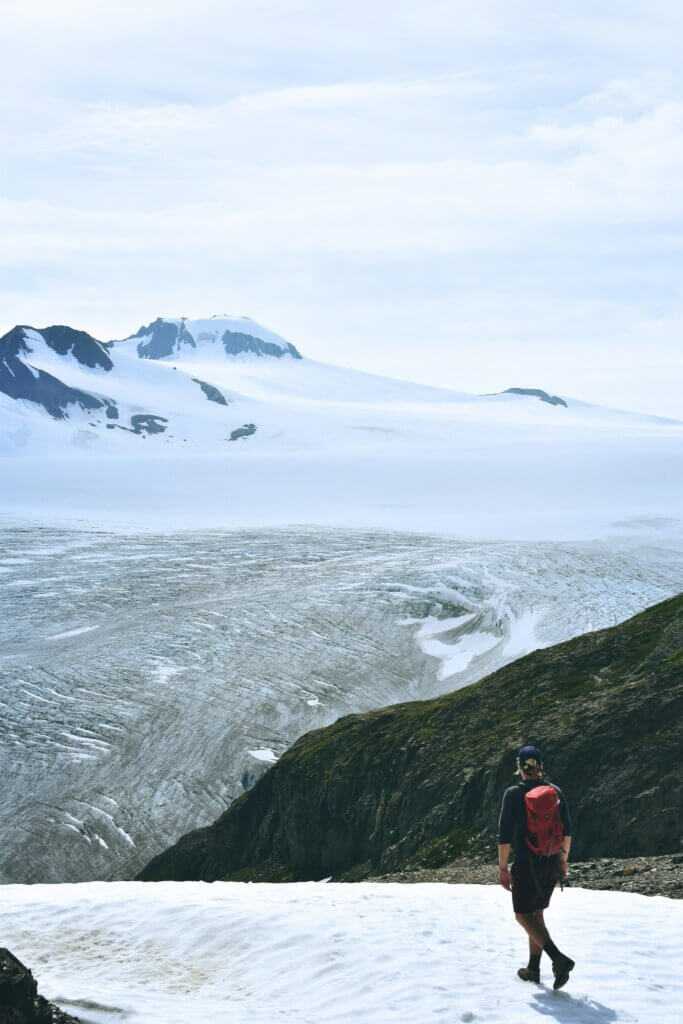
The area around the glacier boasts carefully curated trails complete with interpretive signs explaining plant life’s re-emergence after the receding ice. Additionally, The Alaska App offers a self-guided audio tour narrated by the Park Service’s chief interpretive ranger, imparting further knowledge about this icy marvel.
For the more adventurous, the Harding Icefield Trail offers a steep 4-mile climb with a staggering 3,500 feet elevation, opening up breathtaking glacier vistas. The trail also provides guided glacier hikes for those who wish to experience a walk on ice.
The Exit Glacier can be accessed all year round via road or hiking trails. Winter visitors can indulge in various outdoor activities like cross-country skiing, fat bike riding or snowmobiling. For warmer weather, the Seward Highway leads directly to the Exit Glacier Road, where a parking area awaits at its end.
The marvellous network of the Harding Icefield Trail not only offers panoramic views of the Exit Glacier but also presents the sight of the expansive Harding Icefield. Regarded as one of the most rewarding hikes in the Kenai Peninsula, it is an experience that shouldn’t be missed. High points like ‘The Cliffs’, situated halfway on the trail, offer some of the best views. The hike involves 1,000 feet of elevation gain per mile and spans 8.4 miles, but the experience and the views are worth the challenge.
Root Glacier in Wrangell-St. Elias National Park, Alaska
Situated in the spectacular park of Wrangell-St. Elias National Root Glacier provides a remarkable and accessible summer hiking destination, just a short distance from Kennecott Mines National Historic Landmark. This trail offers a tempting treasure of panoramic views, including the iconic Mt. Blackburn, the dignified Regal Mountain, and the majestic Donoho Peak.
Enthusiastic about the idea of glacier trekking? McCarthy offers Numerous opportunities, spanning from leisurely one-day hikes to more ambitious multi-day backcountry trips. Regardless of one’s level of trekking experience, a wide selection of suitable gear is available for rent.
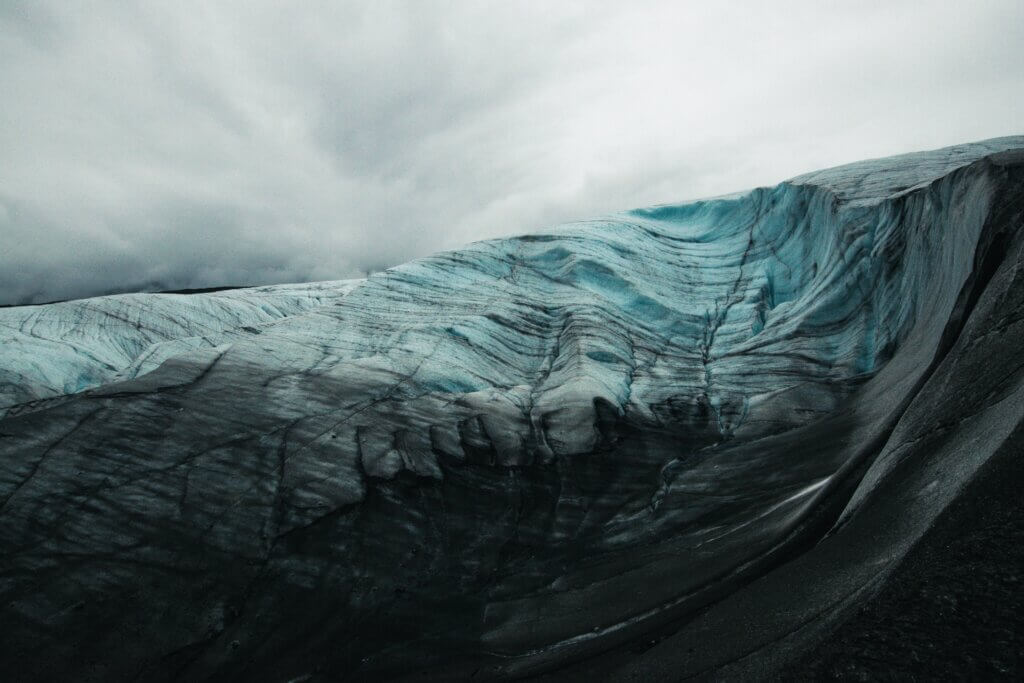
However, visitors should not feel obliged to take a guided glacial hike to appreciate the beauty of the area. A simple trail towards the edge of Root Glacier can be just as rewarding. This easy hike is an excellent means to fully absorb the glacier’s impressive vistas more relaxedly. Indeed, Root Glacier captures the extraordinary harmony of Alaska’s untouched landscapes, offering novice explorers and seasoned trekkers a memorable outdoor experience.
The Majestic Twin Sawyer Glaciers in Alaska
Immerse yourself in Alaska’s awe-inspiring natural beauty with a visit to the Tracy Arm, where the striking twin Sawyer Glaciers offer a one-of-a-kind photo opportunity waiting to happen. These two tidewater glaciers lie at the head of Tracy Arm, a captivating 27-mile-long inlet located a mere 50 miles south of Juneau. Travellers are invited to embark on an unforgettable tour that seamlessly integrates the chance to explore these marvels of nature with a daring navigation of the somewhat challenging S-turns of Tracy Arm’s dramatically narrow mouth, often not exceeding half a mile in width.
With sheer rocky cliffs oscillating over 3,000 feet on either side of the inlet and waterfalls cascading down their faces, this is the quintessential Alaskan experience. Providing an up-close and vivid look at the compressed ice, the South Sawyer Glacier, the larger sibling of the two, flaunts majestic, big, and resplendent blue icebergs. Moreover, if the glacial conditions allow, tourists can approach as close as half a mile to its face, a proximity promising an unparalleled glacier experience.
Yet, the tour has more to offer beyond the icy beauties. You might also catch a glimpse of the wildlife that enlivens the shores. It’s common to spot mountain goats roaming around and bears foraging. A colony of seals can often be found near the glacier, adding an extra layer of excitement to this adventure. It’s an all-round cruise where natural wonders abound, from some of the best glaciers to various unique wildlife. The twin Sawyer Glaciers and Tracy Arm truly encapsulate the wild beauty of Alaska, making for an unforgettable journey of discovery.
Ruth Glacier: The Deepest Glacial Gorge from the Sky
The breathtaking Alaskan landscape is home to the magnificent Ruth Glacier, a unique alpine phenomenon that crowns the heights of the mountain ranges. This glacier environment, situated near Mount McKinley, is noted for its incredible depth of 3,800 feet and an unmatched gorge which surpasses even the Grand Canyon in its profound depth.
The Ruth Glacier is part of the family of alpine glaciers predominantly located on mountain peaks or slopes, reaching higher altitudes than their counterparts, the valley and tidewater glaciers. One of the main attractions of the Ruth Glacier is the Great Gorge, renowned for its 5,000-foot granite walls that rise majestically on either side of the ice, carving their silhouettes onto the Alaskan sky. These are deemed among the loftiest granite walls on a global scale. Furthermore, the glacier ice steeply descends 2,000 feet across ten miles. If the ice were to dissipate, the undisturbed canyon left behind would dwarf the majestic Grand Canyon in comparison.
To fully relish the glory of this glacier, visitors are encouraged to sign up for the flightseeing tours operating from Talkeetna, providing aerial marvelling over the unspoiled wilderness of Ruth. Some of these tours even offer a brief glacier landing in the Ruth Amphitheatre, an expansive section of the Ruth Glacier encased in distant peaks, and within view of Mount McKinley, a mere 6 miles away.
K2 Aviation extends a more immersive opportunity with a guided hiking adventure to Moraine Lake, ideal for spending a morning or afternoon nestled in the pristine glacier landscape. Getting there is a thrill, landing on a floatplane onto the frozen glacial lake at the edge of Ruth Glacier. Visitors are then led on a hike with the enormous Ruth Glacier serving as an unforgettable backdrop.
As one of Alaska’s crowning glories, the Ruth Glacier stretches approximately 40 miles in length and features a Great Gorge that measures one mile in breadth and extends to 10 miles in length, establishing itself as the deepest glacial gorge in the world. The extraordinary Ruth Glacier is best experienced from the skies via an air taxi departing from Talkeetna, offering unobstructed, awe-inspiring views of the Great Gorge.
Worthington Glacier: Alaska’s Snowiest Spot
Nestled 28 miles from Valdez, the Worthington Glacier offers a magical experience for snow lovers. Fed by the snowy expanses of the Chugach Mountains around Thompson Pass, the glacier resides in the snowiest location in Alaska.
The area’s winter of 1951-52 remains legendary, witnessing an astounding accumulation of 80 feet of snow. The consistent snowfall has slowed the Worthington Glacier’s retreat compared to its counterparts. This extensive snow coverage has earned the glacier significant attention from the scientific community, with the National Science Foundation currently overseeing a project to map its flow in three dimensions.
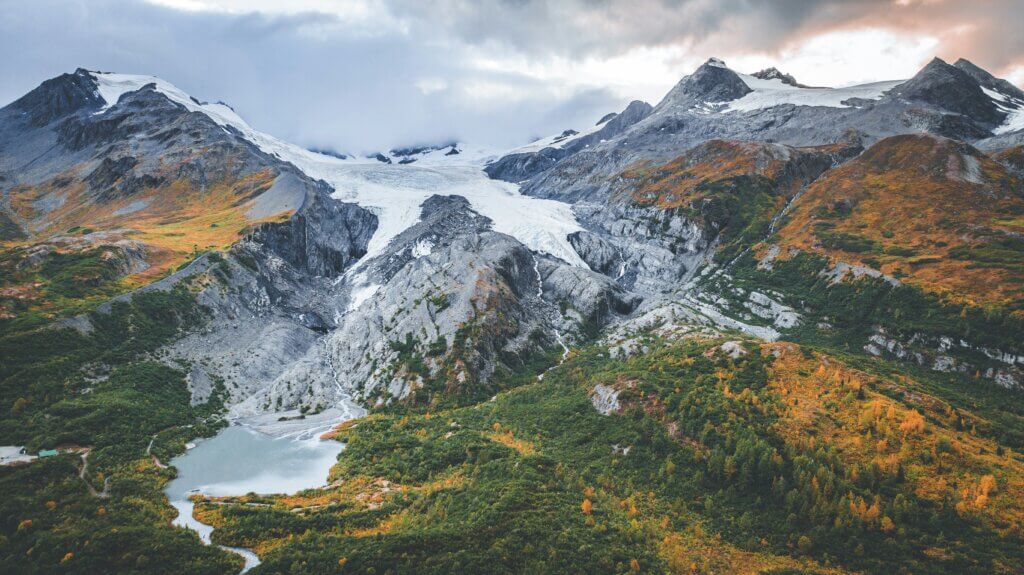
Moreover, the glacier boasts of being one of the most accessible glacial points in Alaska, enabled by a short paved walk leading to an observation platform. The site also accommodates visitors with a spacious parking area, a covered viewing shelter and interpretive signs. The glacier is a popular destination for motorcoach tours but can also be accessed by renting a car from Valdez or joining a glacier trek or ice climbing trip offered by guiding companies.
To reach the Worthington Glacier, the Richardson Highway will lead you 29 miles northeast of Valdez. After reaching milepost 29, the Worthington Glacier State Recreation Site, harbouring the observation point, will welcome you. A dirt path signposted with ‘hike at your own risk’, diverting from the observation area, will guide your passage to the glacier. Despite the slightly rocky terrain, the journey to the glacier and back can be comfortably made within approximately an hour and a half.
Experiencing the Continuous Calving at Alaska’s Childs Glacier
Alaska’s Childs Glacier stands uniquely apart and offers some of the most dramatic natural showcases. Its position alongside a natural roadway ensures it is perhaps the most accessible glacier in the state, and visitors rarely miss out on witnessing the highly anticipated calving phenomenon.
The relentless flow of the Copper River, which threads its way through and around the glacier, persistently undermines the structure’s face. This leads to continuous calving, most noticeably during the summer months. The frequency of large chunks of ice cascading into the water can reach once every fifteen minutes—a truly remarkable sight for onlookers.
However, visiting the Childs Glacier is not as straightforward as one might hope due to its geography. Reaching the glacier requires traversing the waters via ferry or flying into Cordova, a serene fishing village. It is then a one-hour drive along a route trodden by the historic Copper River Railway. Despite being separated by the river at a distance of a quarter mile, the awe-inspiring view of the glacier leaves spectators wanting for nothing.
Furthermore, the glacier’s distance becomes a safety feature, given that colossal instances of calving often propel waves across the river, stripping the beach in their wake. The viewing platform provides unobstructed sightlines and essential protection from these powerful, glacier-induced water surges, known locally as glacier tsunamis. These intense events can enormously impact local wildlife, as evident in tales of salmon being displaced as much as 20 to 30 feet from the river and stranded deep in the forest.
Adding richness to any visit to Childs Glacier is the nearby Million Dollar Bridge, a stunning addition to the captivating natural vista offered by the landscape. The combined experience of the bridge, calving glacier, and picturesque surroundings immerse visitors in a memorable showcase of Alaska’s dramatic and ever-changing natural phenomena.
Spencer Glacier via the Alaska Railroad: A Vibrant Journey into Alaska’s Wilderness
Nestled between Anchorage and Denali in the Placer River Valley, the Spencer Glacier provides explorers a robustly colourful and soothing experience. The glacier can only be accessed by rail, slightly bending the typical definition of a road-accessible glacier. This remote location, surrounded by towering mountain peaks, offers an unparalleled tranquil experience.
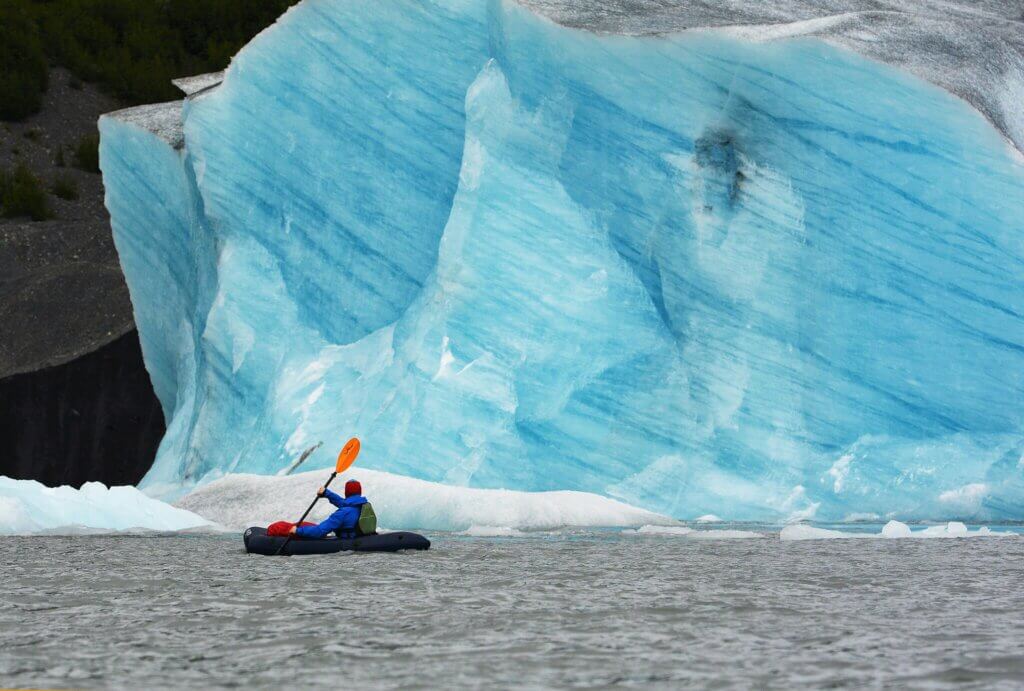
In all its natural beauty, the Spencer Glacier appears like a gigantic natural slope that ascends 3,500 feet from its lowest point in the Alaskan wilderness. This colossal ice formation extends into Spencer Lake, forming a stunning spectacle as it enters the water body. As the ice calves or breaks away, it reveals a deep, dark blue colour, made vibrant by the saturation of fresh water. This blue ice, known as growlers when found in freshwater, can be found floating around Spencer Lake, creating a breathtaking vista.
Visitors are welcome to experience the grandeur of the glacier in several ways. After disembarking from the Alaska Railroad, one choice is to explore via water, floating near the ice formations on a raft trip across the lake, facilitated by Spencer Glacier Rail and Raft. Alternatively, a hiking trip could be more appealing. There are two gravel-surfaced trails to choose from, which are 2.6 and 6.8 miles round trip. There is even the option to join a Forest Service employee for an interpretive hike. Regardless of the selected trail, a two-hour window allows plenty of time to explore before catching the southbound train.
The longer of the two trails has an additional perk— it brings hikers within a miraculous 100 feet of the glacier’s terminus. Timing is essential, though, to ensure hikers return to the southbound train on time.
The Spencer Glacier, a mere 60 miles south of Anchorage, is part of the Chugach National Forest, offering further recreational activities. Adventurous souls can hike, camp, or paddle near the glacier, completely immersing themselves in the Alaskan wilderness. The backcountry of the Chugach National Forest offers the perfect camping site for these outdoor enthusiasts, offering a glimpse of the retreating glacier’s remnants on Spencer Lake. This untouched, natural setting elegantly amplifies the glacier’s awe-inspiring magic.
The Majestic Columbia Glacier in Alaska by Boat or Kayak
Located in the eastern region of Prince William Sound, a particularly stunning glacier has been undergoing a significant retreating process since 1982. This drastic retreat, referred to as “catastrophic,” raises concerns. Specialists anticipated this process to halt by the year 2020.
Daily, approximately 13 million tons of ice fragment from this glacier’s face, resulting in colossal ice chunks often outpacing the size of the vessel from which they’re being observed. These gigantic pieces of ice make approaching the glacier a challenging task.
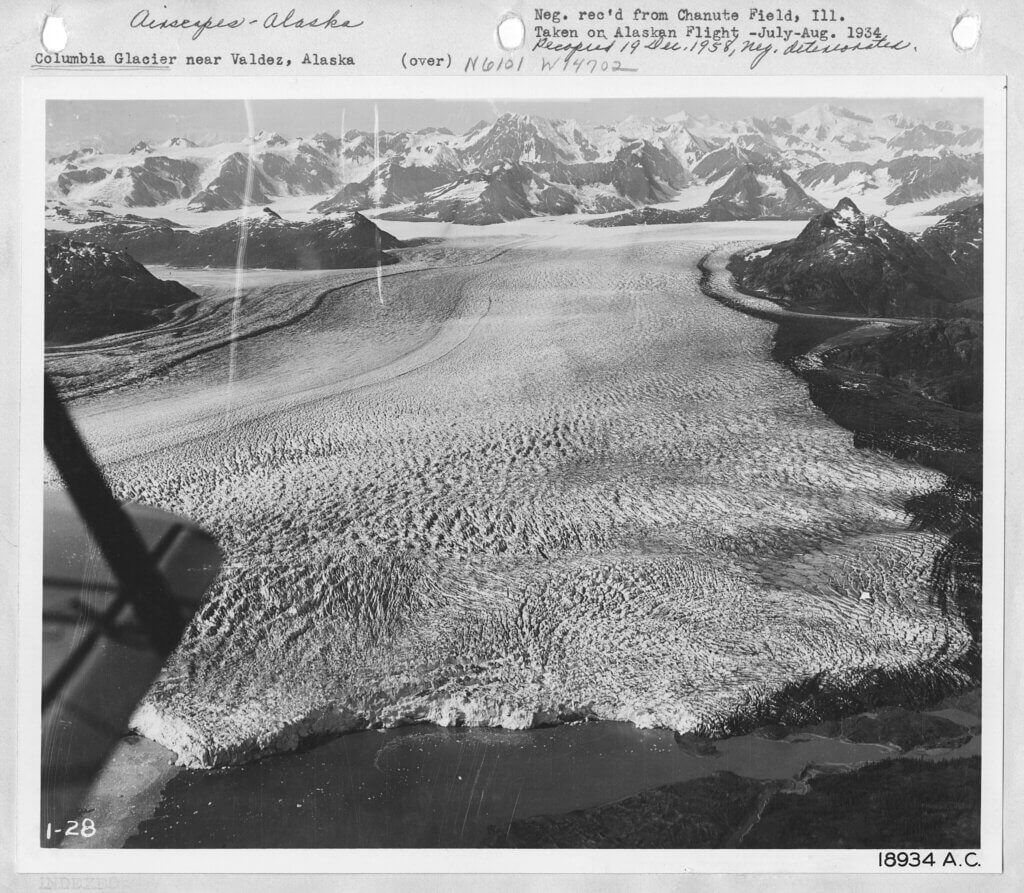
For those eager to witness this awe-inspiring spectacle firsthand, tour boats departing from Valdez offer approximately seven-hour trips, including wildlife viewing along the route. If weather and ice conditions allow, these tours may bring passengers within a mile of the glacier’s face, revealing an astounding panoramic view of 270 degrees. Bold glaciers rise between 200 to 400 feet tall. However, unfavourable conditions may limit proximity to the icy behemoth, pushing vessels no closer than 12 miles.
An aerial video file captured by alaska.org’s Bob Kaufman allows prospective visitors to immerse themselves virtually in this dramatic spectacle. The footage, shot from an aeroplane, showcases a captivating preview of the expansive Alaska glacier.
Portage Glacier and Surroundings: A Trekking and Boating Adventure in Alaska
Located just off the Seward Highway, 50 miles south of Anchorage, the Portage area offers an astonishing display of alpine glaciers, especially the prominent Portage Glacier that spills into the scenic Portage Lake. This picturesque area is part of the Chugach National Forest, and it’s not difficult for travellers to find this icy titan, which has seen a slow retreat over the decades.
It is worth mentioning that Portage Glacier is now at such a distance that its grandeur is unfortunately no longer visible from the vantage point of the visitor centre’s observation platform. Despite this, the glacier’s magnificence can still be experienced up close. Visitors have the breathtaking option of embarking on a boat cruise on Portage Lake, sailing right up to the face of the shrinking Portage Glacier, particularly during the summer.

Alternatively, for those who prefer to keep their feet on solid ground, the visitor centre is the launch point for numerous hiking trails that meander closer to the glacier’s towering walls. Among the trails available are the Byron Glacier Trail, the paved Trail of Blue Ice, and the Portage Pass Trail. The last of these begins on the other side of the Anton Anderson Memorial Tunnel in the nearby town of Whittier.
For an enriching journey through the local ecosystem and a deeper understanding of the glaciers’ might, guests are encouraged to visit the Begich, Boggs Visitor Center. This education hub provides an interactive experience, allowing guests to gain a deeper appreciation of the environmental phenomenon of glaciers. Visitors will immerse themselves in the magical world of the Portage Area, where the power of glaciers is on full display.
Byron Glacier: The Only Accessible Hike in Portage Glacier Area
Embarking on a trek in the Portage Glacier area allows for an unforgettable encounter with the monumental Byron Glacier.
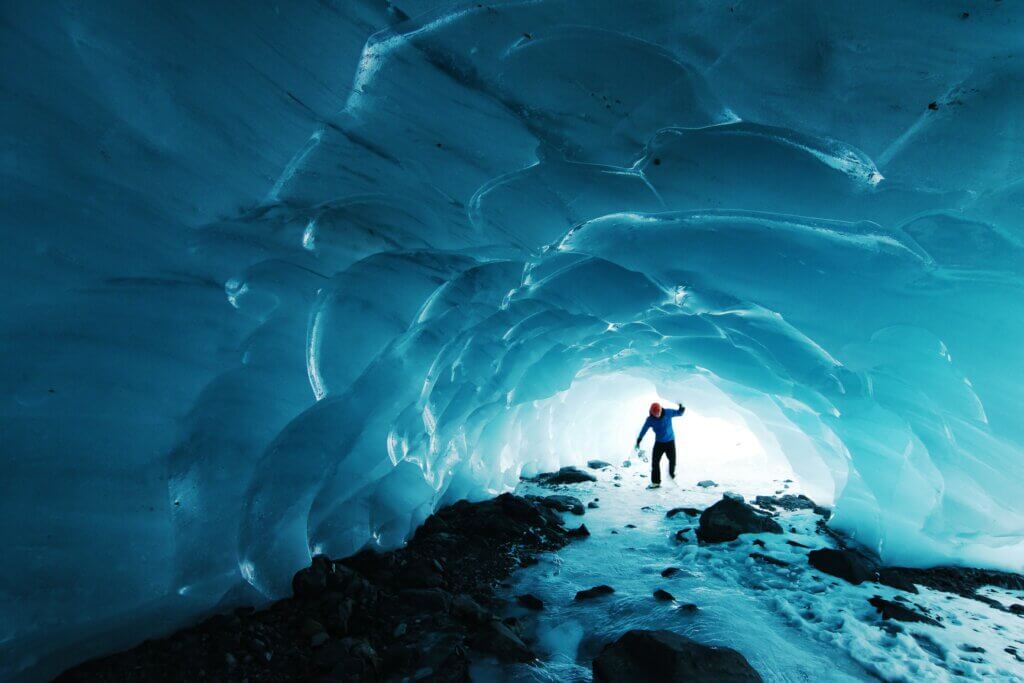
This incredible landscape hosts the sole glacier in the vicinity that can be reached by foot, providing a unique hiking experience. Exhibiting an approximate round trip duration of three hours, the Byron Glacier hiking trail presents a unique opportunity to explore Alaska’s majestic glacial arenas intimately.
Valdez Glacier: A Historic and Recreational Attraction in Alaska
The Valdez Glacier, situated east of the town of Valdez in the lofty Chugach Mountains, is a testament to Alaska’s glittering icy landscapes. This mighty glacier extends over a distance of 20 miles and contributes to forming the nearby Valdez Glacier Lake, an awe-inspiring water body with its deepest point plunging to a staggering 640 feet.
Historically significant, the Valdez Glacier was a resting point for fortune seekers during the late 19th century Gold Rush before it evolved into the renowned tourist attraction it is today. Visitors can explore its breathtaking expanses by meandering around the glacier lake on a kayak during the spring months or skimming its frosted surface on skates in winter.
In addition to these exhilarating experiences, the glacier’s prime location within a winter sports haven renders it particularly irresistible to enthusiasts. Whether one yearns to blaze through pristine white landscapes on a snowmobile or carve elegant trails on skis, the Valdez glacier offers a majestic glacial backdrop that transforms these activities into unforgettable adventures. The surrounding terrain, resplendent with the grandeur of the Alaskan wilderness, enchants numerous visitors each year, all seeking to marvel at the impressive glacial view.
Castner Glacier
Situated approximately 2.5 hours from Fairbanks, the nearest substantial city, the mesmerizing glacier nestled in Alaska is easily accessible for tourists and locals alike. A journey along the Richardson Highway, reaching milepost 217, will lead to the primary trailhead to the glacier and its remarkable ice caves.
A round trip to the Castner Glacier comprises an approximately 2.2-mile hike adorned with breathtaking mountain views, adding another dimension to the overall experience. However, caution is advised when it comes to exploring the glacier’s ice caves. Given the inherent risks, it is strongly recommended that only those accompanied by experienced mountaineers or park staff venture inside these caves, as they possess the knowledge and expertise to navigate through any unforeseen hazards.
The Advancing Margerie Glacier in Alaska
The Margerie Glacier, located within the confines of the Glacier Bay National Park and Preserve, stands out in North America. This glacier is notably receding; in contrast to the norm, it is impressively advancing. Only eight are known to be making such progress among the continent’s glaciers, and Margerie Glacier is one of these exceptional few. Adding an impressive 30 feet to its length annually, the Margerie Glacier continues to defy nature’s odds.
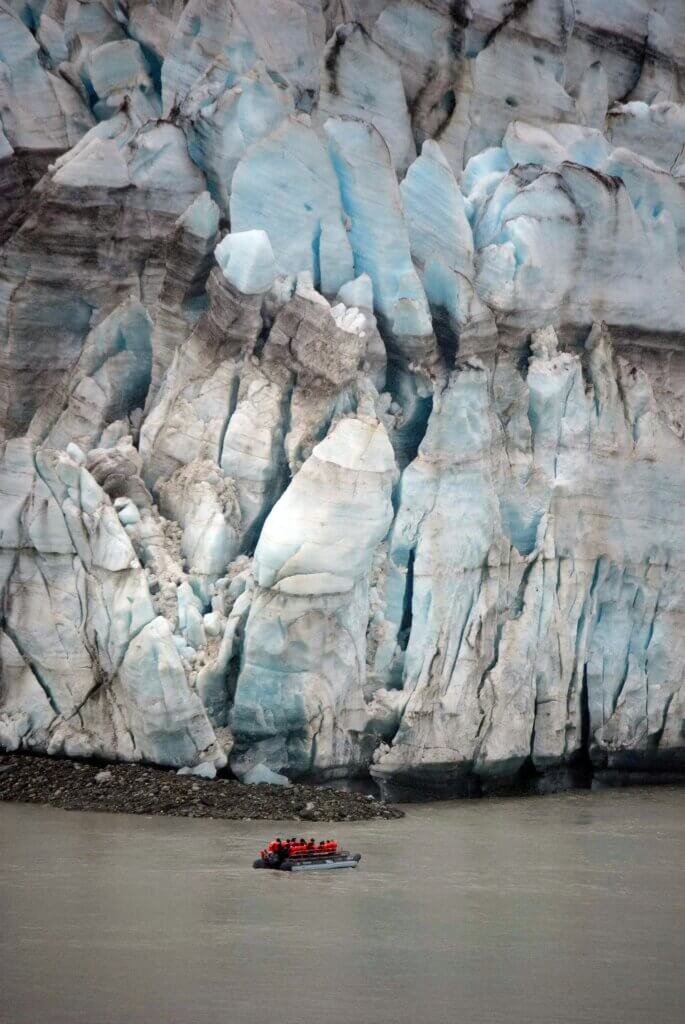
Taking a cruise brings the enchanting spectacle of the glacier even closer. The sight is especially remarkable as the glacier flaunts an icy surface tinged with blue, giving it the appearance of floating atop the water. Yet beneath this misleading surface, the glacier boasts an under-structure extending 100 feet below. It’s a sight that is as compelling as beautiful, reflecting a deeper narrative of nature’s incredible feats and wonders.
The Holgate Glacier in Alaska’s Kenai Fjords National Park
Situated within the confines of Kenai Fjords National Park, the Holgate Glacier stands as an impressive natural spectacle. A tidewater and mountain glacier, it has carved its home in Aialik Bay. It shares a distinctive feature with the Margerie Glacier: both are part of a limited group of merely eight glaciers currently escalating in size and ice content.
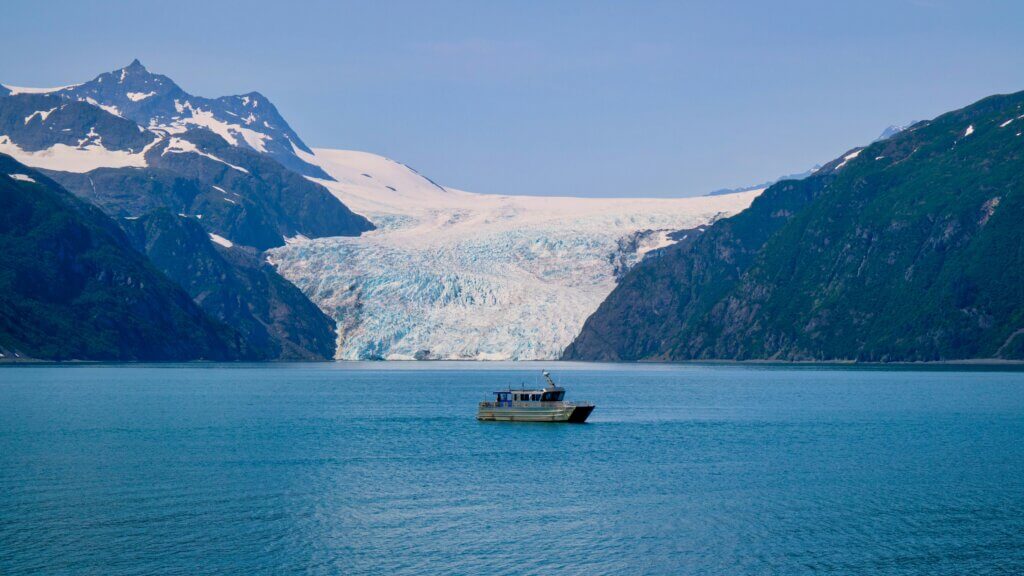
Viewing the Holgate Glacier can be a captivating venture, with easily accessible options available. For an up-close look at its façade, a daily cruise departing from Seward offers unparalleled viewing opportunities. Kayaking towards the glacier is also an option for those looking for excitement. While maintaining a safe distance, kayakers can witness the awe-inspiring spectacle of glacial calving. This remarkable process involves the glacier shedding enormous sections of ice into the waters below. This dramatic display contributes to an extraordinary adventure, offering a unique way to appreciate the power and majesty of the Holgate Glacier.
The Aialik Glacier: Activities and Adventures in Alaska
Renowned as a spectacular retreat for nature enthusiasts, Alaska’s stunning glacier is the quintessential site for various captivating outdoor activities. An array of engaging exploits awaits visitors, ranging from kayaking to whale watching. Embedded in the heart of Alaska, the breathtaking panoramas of this icy spectacle provide an irresistible allure for adventure enthusiasts worldwide.
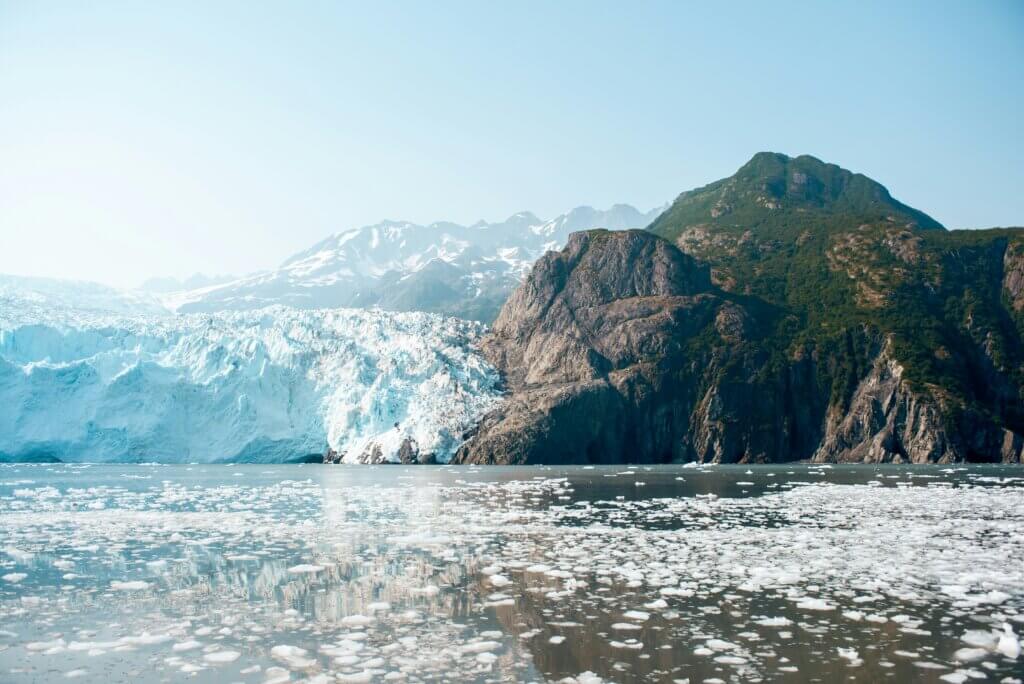
However, a two-hour cruise around the glacier offers a serene alternative for those preferring a less physically strenuous but equally immersive experience. Passengers on these cruises are spoilt with uninterrupted, close-up views of the glacier’s pristine beauty. In a twist of excitement and bewilderment, the voyage also permits the unique opportunity to witness the annual migration of humpbacks and orcas, adding a remarkable wildlife encounter to the overall experience. Incorporating a cruise around Alaska’s glacier into their itinerary promises travellers a memorable exploration of the state’s majestic wonders.


